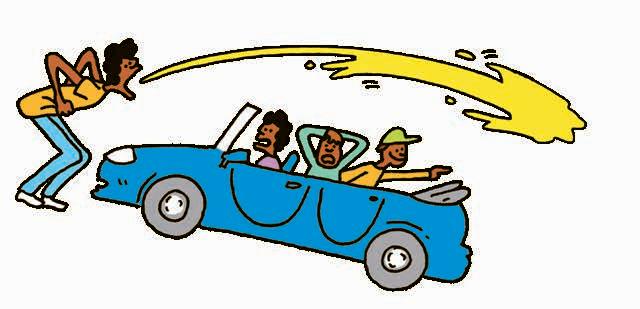

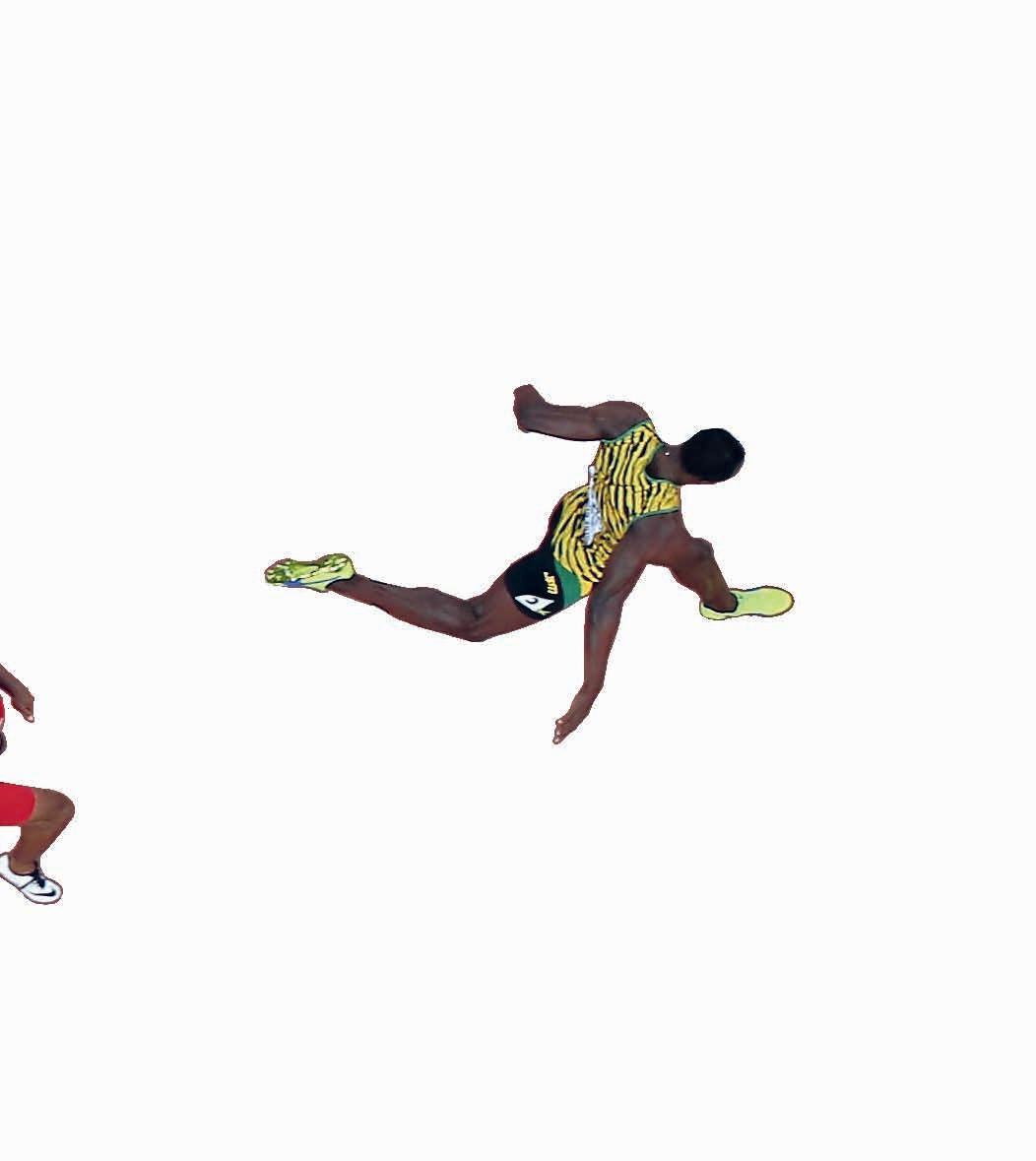


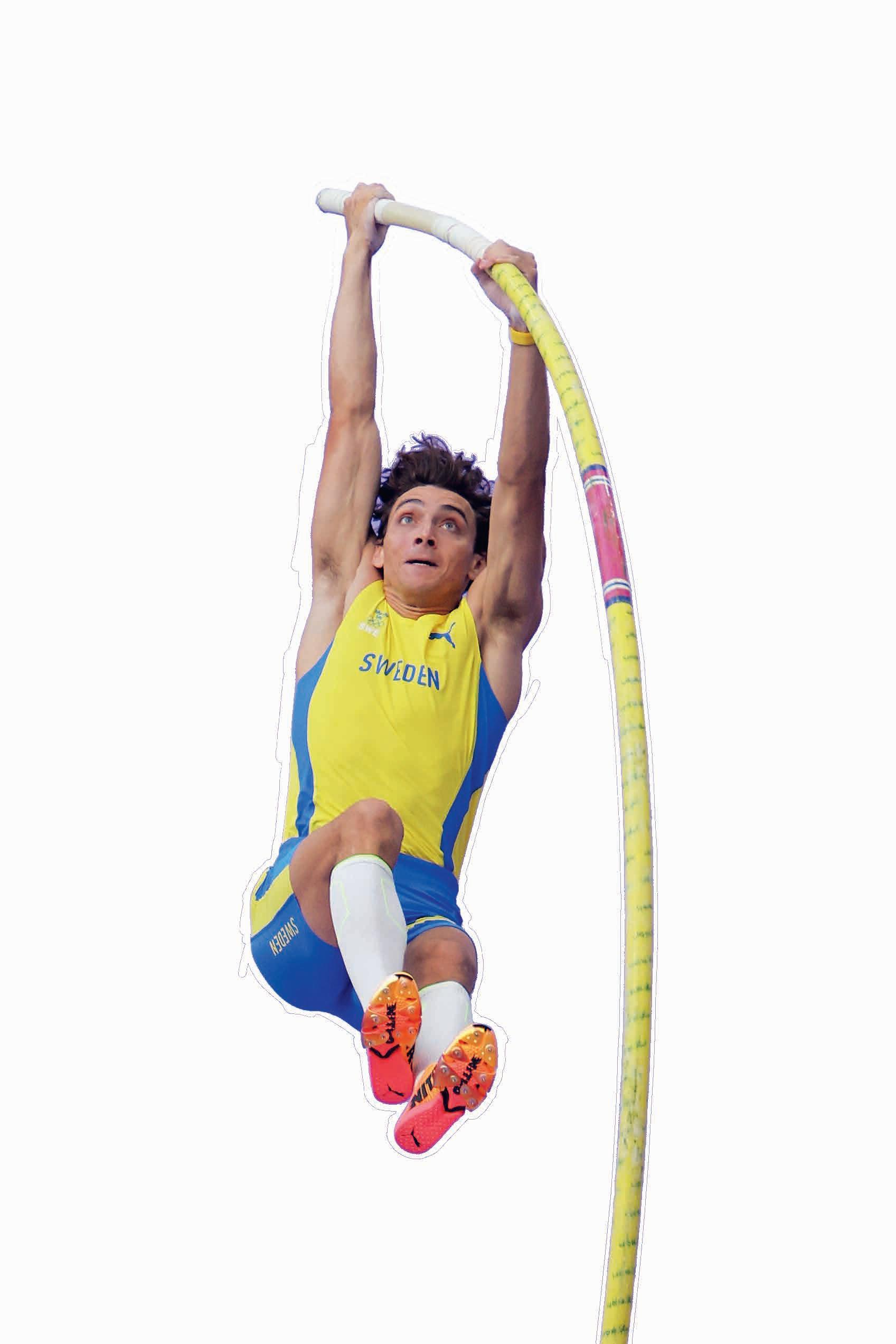



A wild and wonderful world awaits you inside!










A wild and wonderful world awaits you inside!
From why Saturn would float in a bath to the world’s biggest shoes, check out some epically interesting facts on page 16
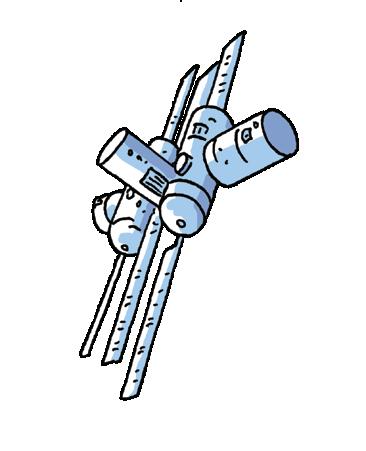
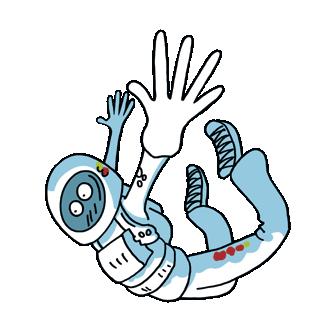



BIG QUESTIONS
Discover the answers to some of the universe’s biggest questions on page 46 – including why helicopters are so loud and how your hair grows.
UP
Have you heard of a doblin, upsilator or fossywollop? Turn to page 14 to discover brand new words invented by What on Earth! readers!

SNAP IT!
Turn to page 6 to enjoy breathtaking photos from around the world.
FACTOPIA!
Follow the trail of crazily connected facts on page 4 all the way from oily hairless cats to… ancient Peruvian popcorn. HIDDEN PHRASES Page 15 REFER A
SEND IT IN!
Meet a chicken that has been learning how to speak fluent fox on page 48. Plus, watch a bookshop get an amazing FACTopia! makeover.
Don’t look down on page 24, as we celebrate extraordinary feats of speed, strength and endurance.
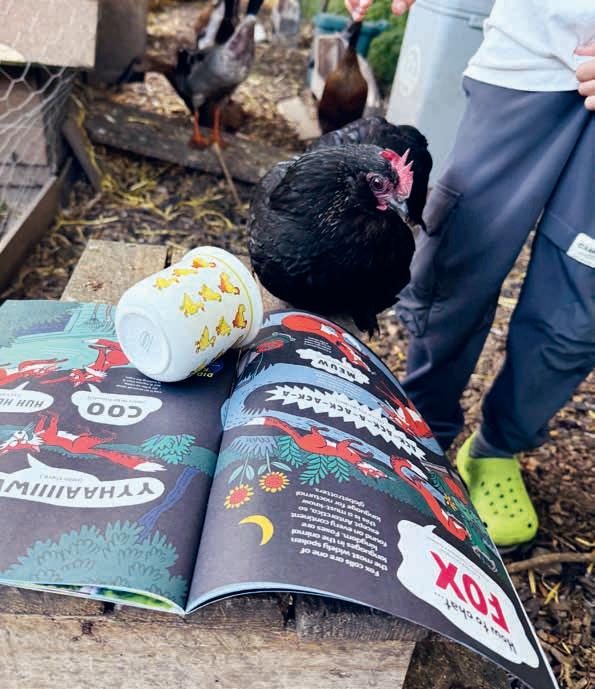
MAP IT
Turn to page 22 to find out how the world’s forests and grasslands have transformed from ancient times to the present day.

Discover how animals can feel emotions such as
love and joy on page 41









Follow the trail of crazily connected facts all the way from hairless cats… to ancient Peruvian popcorn cobs!

By Kate Hale, Paige Towler, Julie Beer and Rose Davidson

Sweaty socks have odours that attract mosquitoes
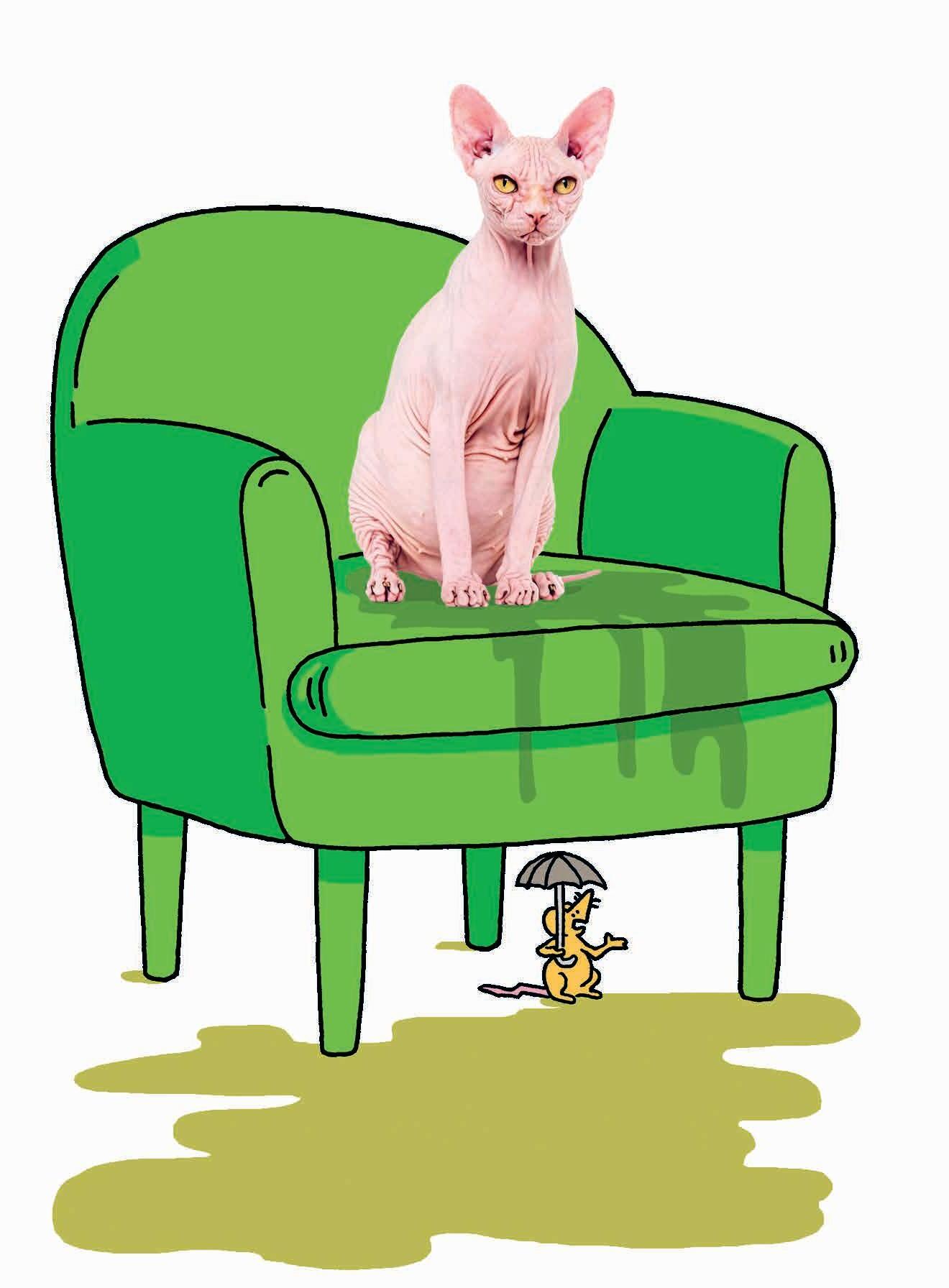
A Tonkinese cat in New Zealand became famous for stealing her neighbours’ socks and underwear and then hoarding them in her home


The human nose can detect one trillion different


Scents can trigger memories because your sense of smell is tied to systems in your brain responsible for emotion and memory
Archaeologists found the body of a mummified cat inside a cat-shaped statue that once wore a gold earring.



It could take up to 375 square metres of bandages to wrap a mummy – that’s almost enough to cover two tennis courts.


The ancient Egyptians thought the heart was the centre of intelligence, so it was the only major organ left inside a mummy. The brain was liquefied and removed through the nose
The ancient Egyptians invented their own breath mints to mask bad

Scents were piped in underneath filmgoers’ seats In the 1950s, some cinemas introduced


Ancient people in Peru ate popcorn –archaeologists have found popcorn cobs they think could be up to 6,000 years old!


Binturongs, tree-climbing mammals from Southeast Asia, smell like popcorn

Teenage photographer
this fun photo of wild pigeons stalking a bag of chips.



Ben used the camera’s voice command to take the shot, and won a prize for his fab photo!


A player prepares to spike the ball during a women’s volleyball championship.
SONY WORLD PHOTOGRAPHY AWARDS 2023/SPORT/ RONALD HOOGENDOORN




This hairy lynx spider was snapped sitting on a flower in a field in the photographer’s back garden in Austria. Lynx spiders like to lurk in flowers so that they can ambush and eat pollinating insects. The spiky bristles on the spider’s legs help it catch prey and keep it still. CUPOTY.COM/MANFRED AUER







This photo is a mix of many different photos, which is called a composite. It was made from photos of airports in both Brazil and the US by Cássio Vasconcellos, who used them to create his own ‘imaginary airport’ for his book Aeroporto. He took thousands of photos to create his artwork.
EPSON PANO AWARDS 2024/ CÁSSIO VASCONCELLOS

This unique mountain, Vinicunca, which is also known as Montaña de Siete Colores (Mountain of Seven Colours), is located in the Andes in Peru. The mountain gets its stunning colours from the various rocks and minerals that are found in its slopes: red clay, mud, sand, quartzose sandstone and more!


The latest astonishing discoveries, inventions and scientific breakthroughs.
Robotics expert James Bruton of Hampshire, UK, has created an amazing bike that can move in any direction – even sideways! Instead of wheels, it uses balls of the same type used by circus acrobats. Bruton wanted to create something for people to watch online. Scan the QR code to see for yourself!
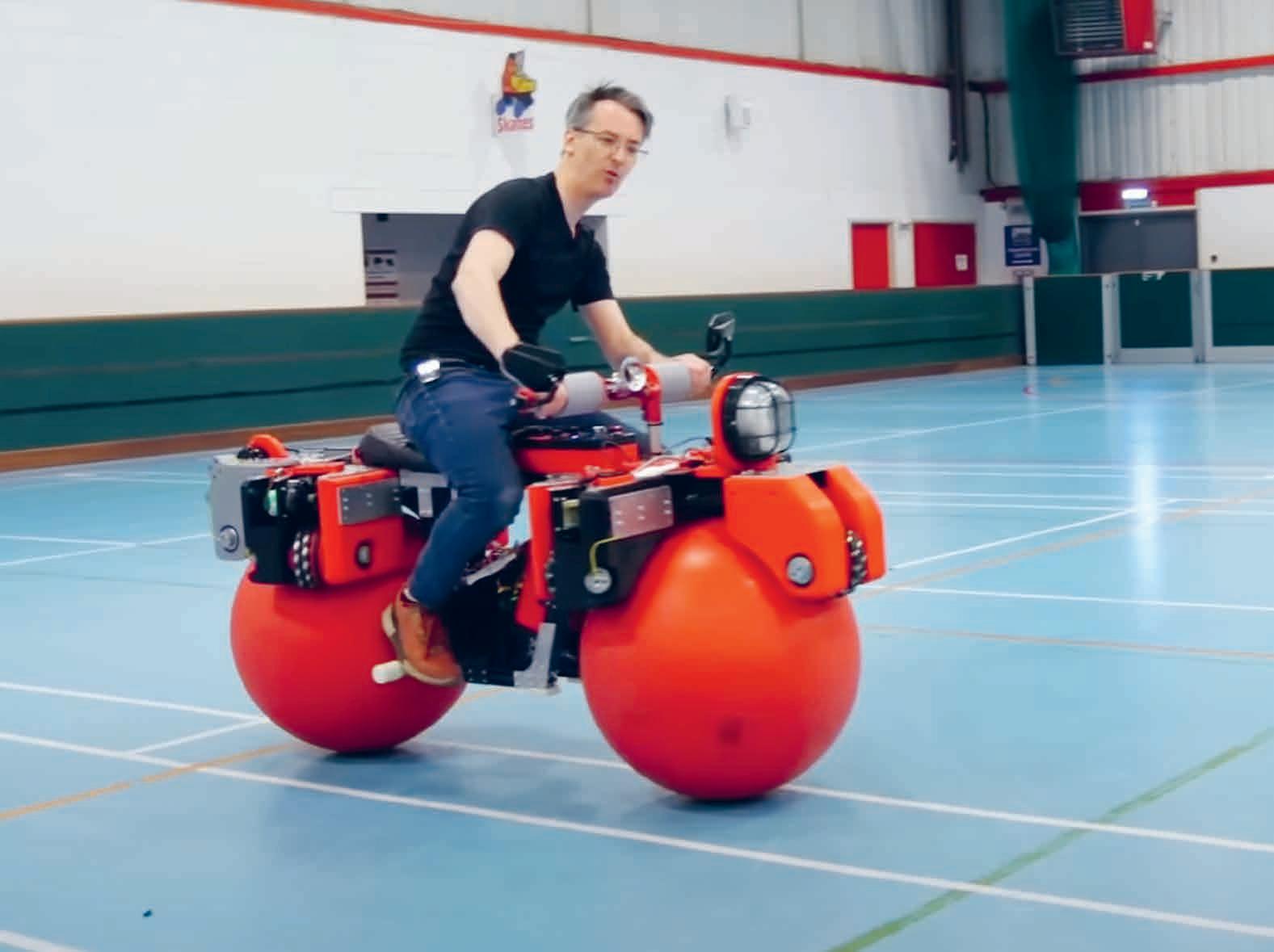
My style is so cool!


Knitwear saves oily penguins
A team of researchers from several universities have published a new study showing the positive effects of art. They reviewed previously published studies involving over 6,800 participants and found that viewing art improves what is called eudemonic well-being, which is well-being that has to do with finding meaning in life and personal growth. The even better news is that you don’t have to go to a museum or gallery to get the benefit! Art in clinics and hospitals also promoted well-being. The researchers are hoping that more healthcare providers will use art to boost mental health.


…so the bike can go in every direction…


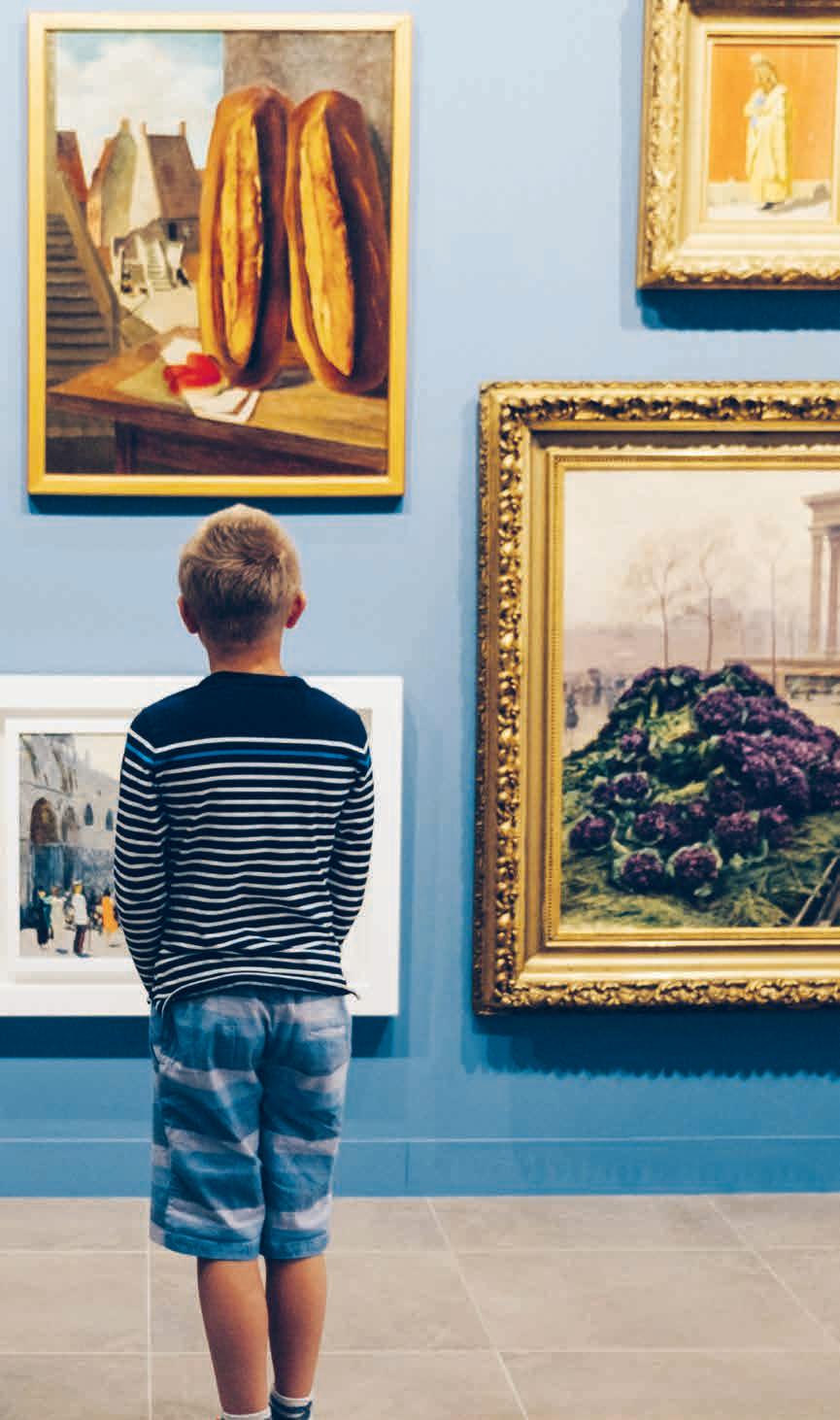

…and make very speedy turns!
I think I’m getting the picture!

This
is the most detailed picture of the Sun ever created. It was made from 25 images taken by the Solar Orbiter, which was built by the European Space Agency (ESA) and NASA. The orbiter is investigating mysteries such as where solar winds come from.


By Dr Nick Crumpton

Illustration by Adrienne Barman
Geckos are very chatty reptiles and are superstars at pest control. They usually spend their evenings hoovering up thousands of tasty insects, and jabbering away to each other as they do!
(Leave me alone!)
If the New Caledonian giant gecko makes this loud noise that lasts for a few seconds, it might be in distress.
These small noises are the closest noise male geckos have to barking. They are used to warn off other males or to attract females.
Mediterranean house geckos make clicking noises to attract mates.
C L I C K
(I like you!)

The turnip-tailed gecko might also make these noises to sound like insects it wants to catch.
(I’m a cricket!)
DID YOU KNOW?
If caught by a predator, some species of geckos can shed their tail to escape – and regrow it later!
THIS MONTH: We asked, and you delivered! After learning in our February issue about the many ways new words are created, our clever readers have come up with their own. Try using these in a sentence, or test them out on your family!
Illustrations by Susanna Hickling

An escalator that goes up. You could also have a ‘downsilator’, which I hope would be obvious… Florence, age 8
A person who announces dinner is ready. Lucy, age 8 ON MY WAY! DINNER!
A stone covered in moss. Lucy, age 8
To say something as it looks, not how it’s pronounced. Gregor, age 9
A crab that is fabulous. Lucy, age 8 KITTER
A cat that likes to knit. Lucy, age 8
To go crazy or be really, really silly like you’re bouncing off the walls. Woody, age 9
A goblin playing Dobble. Lucy, age 8
A boot that is beautiful. Lucy, age 8
To speed eat. So you could ‘speat’ a meal in under 5 minutes! Joshua, age 8
Each of these pictures represents a common phrase or name. Can you work out what each visual clue is saying? Don’t worry if you get stuck, the answers are at the bottom of the page.


Welcome to Epic FACTopia, where the 50 facts you are about to read are big, explosive, amazing – and all absolutely true!
Words
by Rose Davidson and Alison Eldridge Illustrations by Andy Smith

2 A person riding a hoverboard in France once flew further than 2,225 metres.
3 Scientists measured the deepest parts of the ocean by throwing explosives off the deck of a ship and timing how long the echo took to come back to the boat.
4
The greater wax moth can hear sounds at the highest frequency of any animal – meaning that they can hear incredibly high-pitched noises that even dolphins can’t detect.
5 A collector nicknamed ‘Hamburger Harry’ owns more than 3,700 burger-related items, including a hamburgershaped motorcycle. He also has burger-themed toys, clothes and even a water bed!
6 Quokkas are sometimes called the world’s happiest animals because they

1 Named after the Norse god of thunder, Canada’s Mount Thor is the steepest and tallest cliff on Earth, with a vertical drop of more than 410 storeys. Parts of Mount Thor are as much as 3.5 billion years old, making it some of the oldest rock on Earth as well!


7 The world’s loudest room is used to test how well space hardware can withstand the intense noise produced during rocket launches.
8 How big are your shoes and feet? Probably not as big as the shoes shown above. The world’s largest shoes are as long as a two-storey building is tall!

fields can be seen from space.
10 A supernova, an exploding star and the hottest natural thing in the universe, can be 6,000 times hotter than the Sun’s core.
11
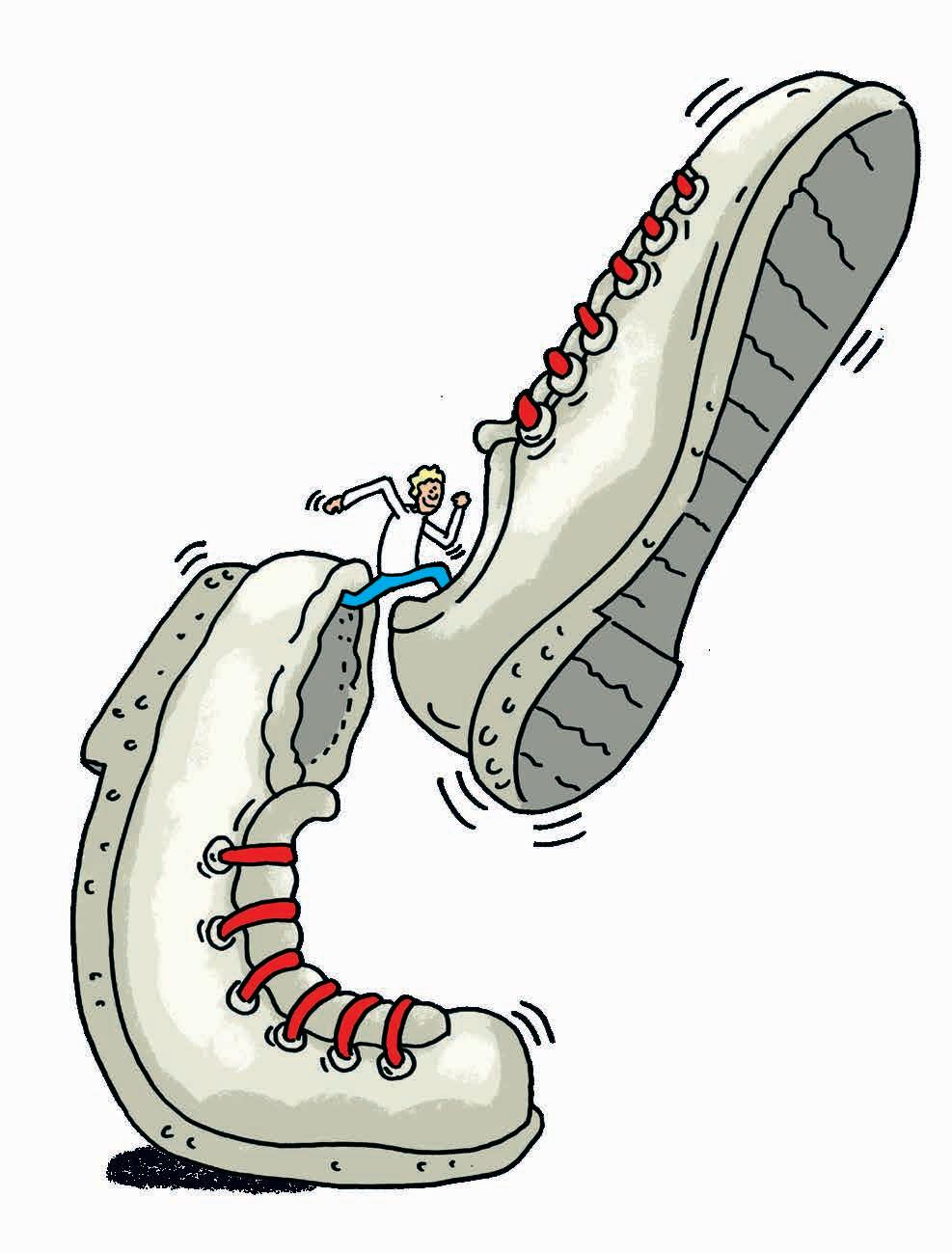
The world’s smallest snail could fit through the eye of a needle.
12
In 2018, an international team of cave divers rescued a football team from a flooded cave in Thailand. look like they’re smiling when they pant.
The twelve junior association team members, aged 11 to 16, and their assistant coach were trapped inside the cave for 15 days.
13 Some ferrets have been trained to run wires and cables through small places where humans can’t fit.
14 To spice up their food, ancient Aztec people made an early version of
9 When in bloom, some orange poppy flower

Small and agile, ferrets are great at fitting into tight spaces.
Continued from previous page
15 The turquoise killifish goes from baby to fully grown in only 14 days.
18 After his boat sank 30 metres below the water’s hot sauce with water and chilli peppers. They were also among the Mesoamerican cultures that first ate chocolate.
16 A concept for a $1 billion mega yacht named The Streets of Monaco – modelled after the country of Monaco, in Europe – is a ‘floating city’ with its own racetrack. The concept also features casinos,
tennis courts, a mini waterfall and swimming pools. It also has space to dock submarines and helicopters!
17
Some Russian scientists found seeds that had been buried 32,000 years ago by an Ice Age squirrel and used them to grow new plants.

21
The gold medals at the Olympics are made mostly of silver. The top prize is required to be plated in at least 6 grams of gold. For the 2024 Paris Olympics, the medals also included a piece of the Eiffel Tower!
surface, a ship’s cook survived for three days by breathing from an air bubble that formed inside the vessel, before he was rescued by divers.
19 The largest-ever chocolate bar weighed more than 2,676 kilograms and reached 2.7 metres long.
20 Each summer in Buñol, Spain, tens of thousands of people gather, armed with tomatoes, for La Tomatina – the world’s biggest food fight. The festival has been held since the 1940s, when it was started by a friendly food fight.
22Pygmy sperm whales create a cloud of poo to confuse predators while they make a quick exit. They wave their tails through the big blobby bubble of poo to create a poo-nado!
The mega yacht’s living quarters are spread over three floors.

23 In some tropical reefs, scuba divers can explore by underwater scooter. Using battery-operated propellers, the scooters pull divers through the water. This allows the divers to save oxygen and energy because they don’t have to kick their legs.




24
To reach Kalavantin Durg – an ancient fortress near Mumbai, India – attackers would have had to make a dangerous trek that involves scrambling up steep inclines and scaling zigzagging stairs.

Kalavantin Durg in India is nearly 700 metres tall!

27 With superspeedy fingers, one competitor solved a Rubik’s Cube in just 3.13 seconds – the fastest time on record.
28 Redwood trees are the tallest trees in the world and home to wandering salamanders that have adapted to parachute and glide through the air if they drop from the treetops.
29 In Pismo Beach, California, a goat named Pismo has learned to balance on a surfboard, once even catching a 2.7-metre wave. Pismo’s mother, Goatee,
25 Travelling more than 32,000 kilometres in a round trip from one end of Earth to the other, each year the Arctic tern makes the longest-known migration of any animal.
26Built to look like London’s Tower Bridge, the largest-ever LEGO sculpture contained more than 5.8 million individual pieces.
and sister, Grover, have also been known to catch a wave or two in their time!
30 A waterslide in the Bahamas sends riders down a clear tube on a replica of an ancient temple and through a shark-filled lagoon.
Continued on next page



31 With the deadliest bite force of any animal, the saltwater crocodile is able to chomp down on a steak with more than 18 times the pressure of a human jaw.


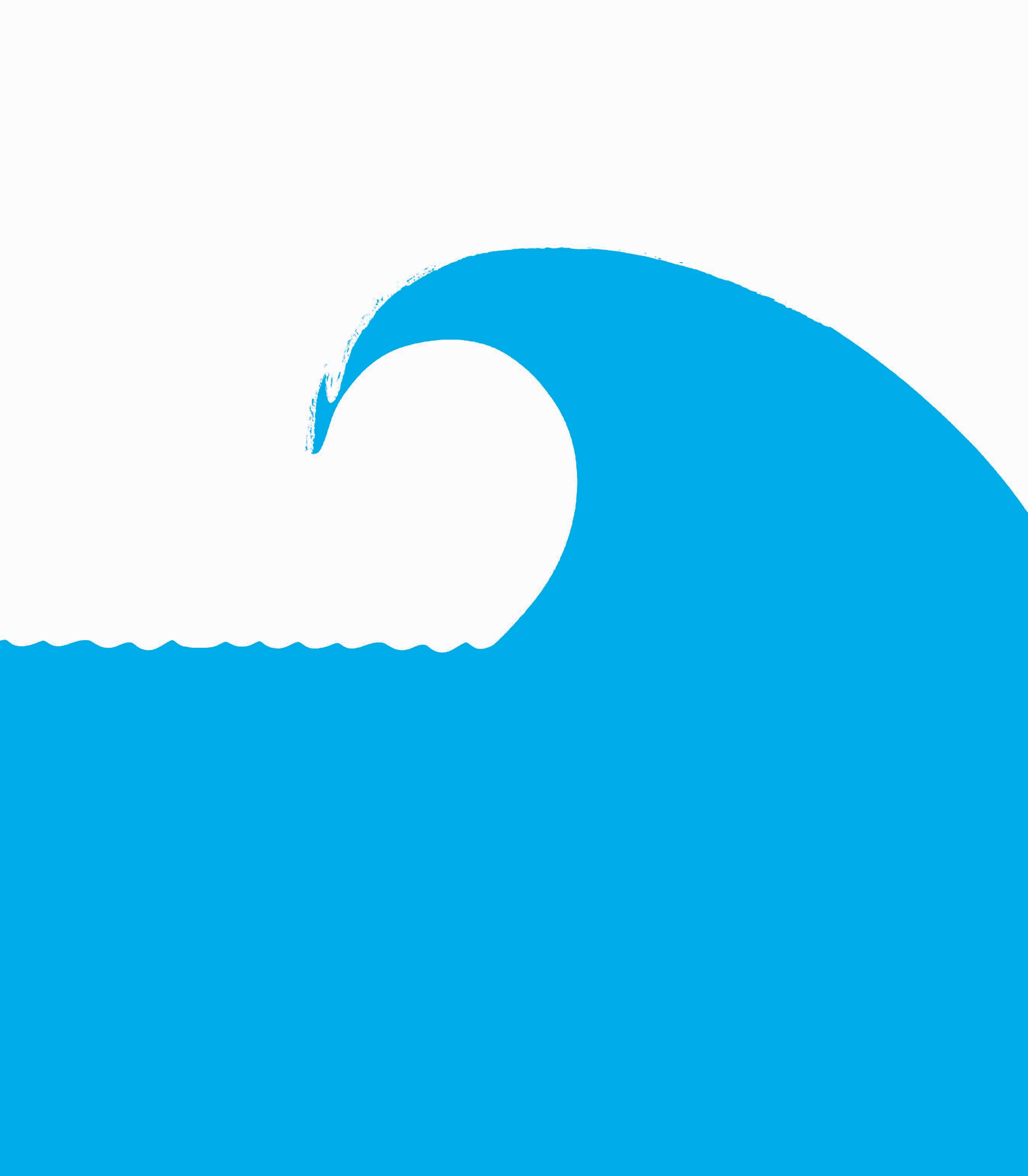

Continued from previous page
32 An Austrian skydiver once made a parachute jump from space.
33 In the sport of extreme ironing, people attempt to smooth clothing in challenging places, including in the sky or underwater. Other extreme ironing locations include on top of a large statue, in the middle of the M1 motorway, while parachuting, while skiing, and inside a canoe!
34 As an elaborate April Fools’ Day prank, a UFO-shaped hot-air balloon was flown over London, prompting many people to report sightings of extraterrestrial activity.
35 RoboBees – tiny robots weighing about as much as a honeybee – are small enough to fit on a
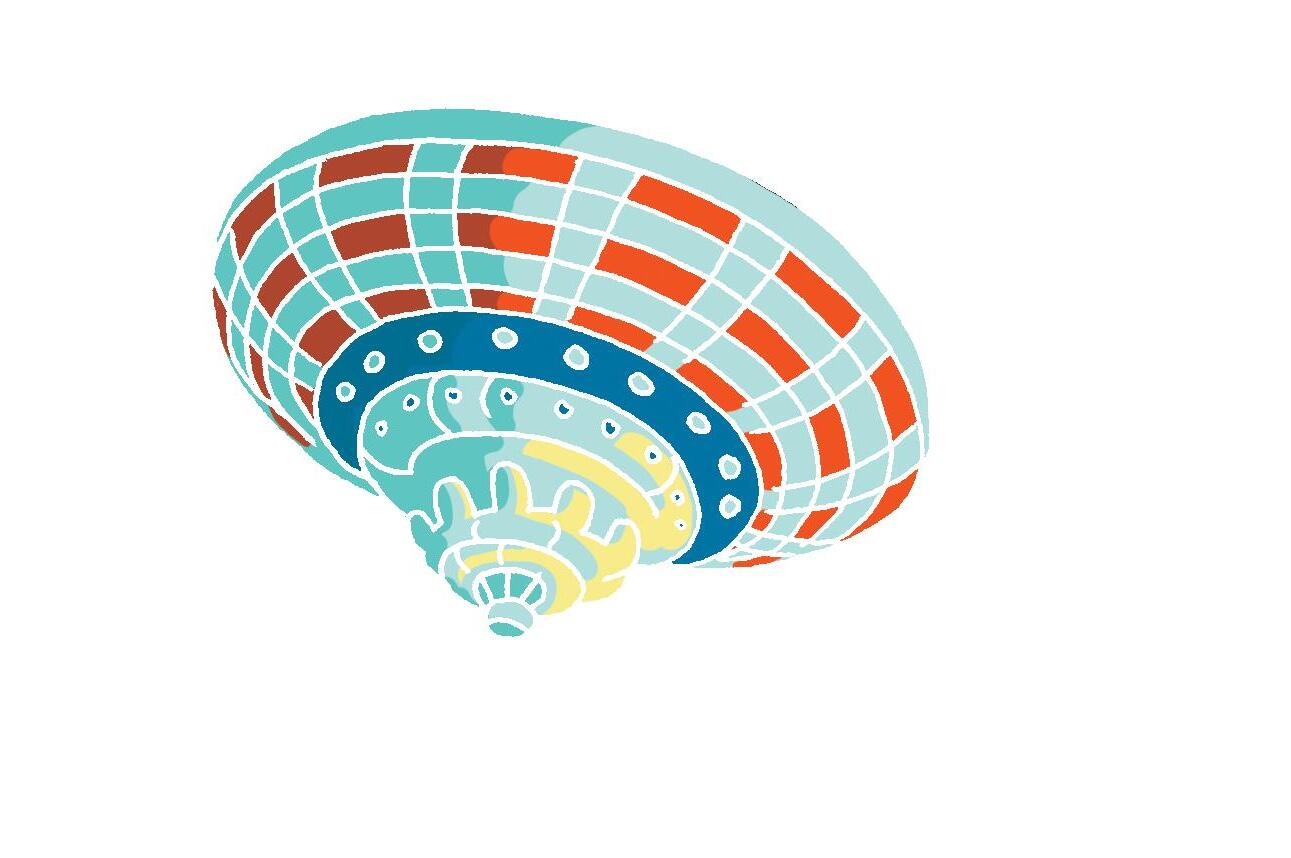

Extreme ironing makes doing chores a real adventure.
human fingernail. The researchers who are developing them hope that swarms of the tiny robots can be used to help in crop pollination, weather monitoring, surveillance, and search and rescue missions.
36
One of the world’s most flexible humans, nicknamed ‘Rubberboy’, can rotate his head 180 degrees to see directly behind himself.
37 A man from Pakistan once crushed 315 walnuts in one minute using his elbow. In the 19th century, one Canadian strongman pushed a train carriage uphill – he’s still thought to be one of the strongest humans ever to have lived.
40
The world’s tallest skyscraper – the 828-metre high Burj Khalifa in the United Arab Emirates in the Middle East – is also home to the world’s highest restaurant. The restaurant is called At.mosphere, appropriately, as it serves oysters and caviar from 122 storeys up in the air.
41 A golden cookie sign hanging over a German company’s headquarters was stolen by someone in a Cookie Monster costume. The sign was eventually found hanging around the neck of a local statue of a horse.
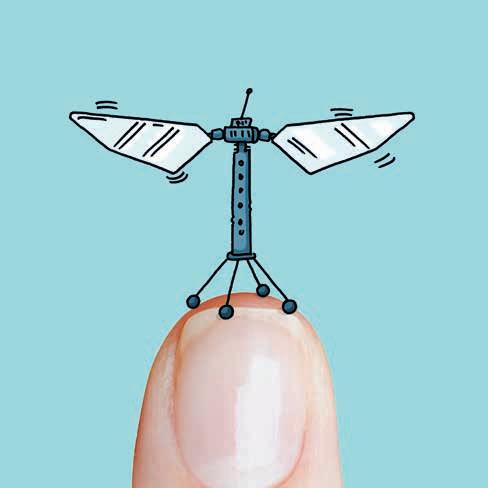
38 A high-rise apartment building in Miami, Florida, USA, has lifts not only for residents, but also for their cars. Apartment dwellers can drive into a lift that will take their cars straight up to their homes.
39 Saturn, the only planet less dense than water, could float in a bath, if there were one big enough!
42 There’s a light bulb fixture in a fire station in California, USA, that has been shining for more than 120 years. The light is always left on to make sure that there’s light on the fire engines.
43 Though the odds of finding a lucky four-leaf clover are around 1 in 10,000, one lady in Australia found 21 in her front garden in a single day.


44 In 1999, a daredevil on a motorcycle launched himself over the Grand Canyon, clearing the canyon and landing on the other side. He jumped nearly 70 metres, breaking his own previous record of 68 metres.

45 A toy car made of white gold and encrusted in more than 2,700 diamonds with ruby tail lights sold for $60,000 at an auction.
46 The first people to cross the English Channel in a hot-air balloon brought so much stuff that the balloon stayed low and almost crashed. In panic, the passengers threw almost everything they could overboard – including their jackets and trousers!
47 Starting from 76 storeys above ground, the world’s highest bungee jump plummets
50 The world’s largest statue – the Statue of Unity in India – is taller than 36 giraffes standing on top of each other. The statue is of a politician and Indian independence activist named Sardar Patel.



people straight from the top of Macau Tower in China. The daredevil jumpers get to experience free fall for about 6 seconds!
48 Pando, a colony of aspen-tree clones with roots spreading across more than 40 hectares, is one of the world’s largest living organisms – all 40,000 trees were cloned from one seed.
49 Every year, climbing guides on Mount Everest bring back about 12,700 kilograms of human poo – that’s the weight of

Over the past 5,000 years, Earth’s landscapes have been dramatically reshaped by humans. Forests and wild grasslands once covered 99% of the land on Earth that is habitable, which means suitable for humans to live on. But these wild landscapes have steadily declined to make way for human agriculture, towns and cities.
44% GRASSLAND
5,000 YEARS AGO
More than half of Earth’s habitable land was forests and grassland. Humans used less than 1% of habitable land.
55% FOREST 52% FOREST
1700
As agriculture spread, the amount of habitable land used by humans for crops and farm animals grew steadily.
<1% URBAN
<1% URBAN <1% CROPS 3% CROPS <1% GRAZING
38% GRASSLAND
6% GRAZING
KEY
Forest Includes tropical, temperate and boreal forests.
Grassland
Wild grasslands and shrublands not used for agriculture.
Grazing
Land covered with vegetation used to feed livestock.
Crops
Land used to grow food for humans and animals.
Freshwater Includes all the freshwater lakes and rivers on Earth.
Urban Land used by humans for towns and cities.
48% FOREST
8% CROPS
14% GRASSLAND
38% FOREST
1% URBAN 15% CROPS
1900
Growing human populations and the Industrial Revolution led to the loss of even more forests and wild grasslands.
27% GRASSLAND
16% GRAZING
2018
By the 21st century, human land usage had grown from less than 1% to almost half of all the habitable land on Earth.
31% GRAZING







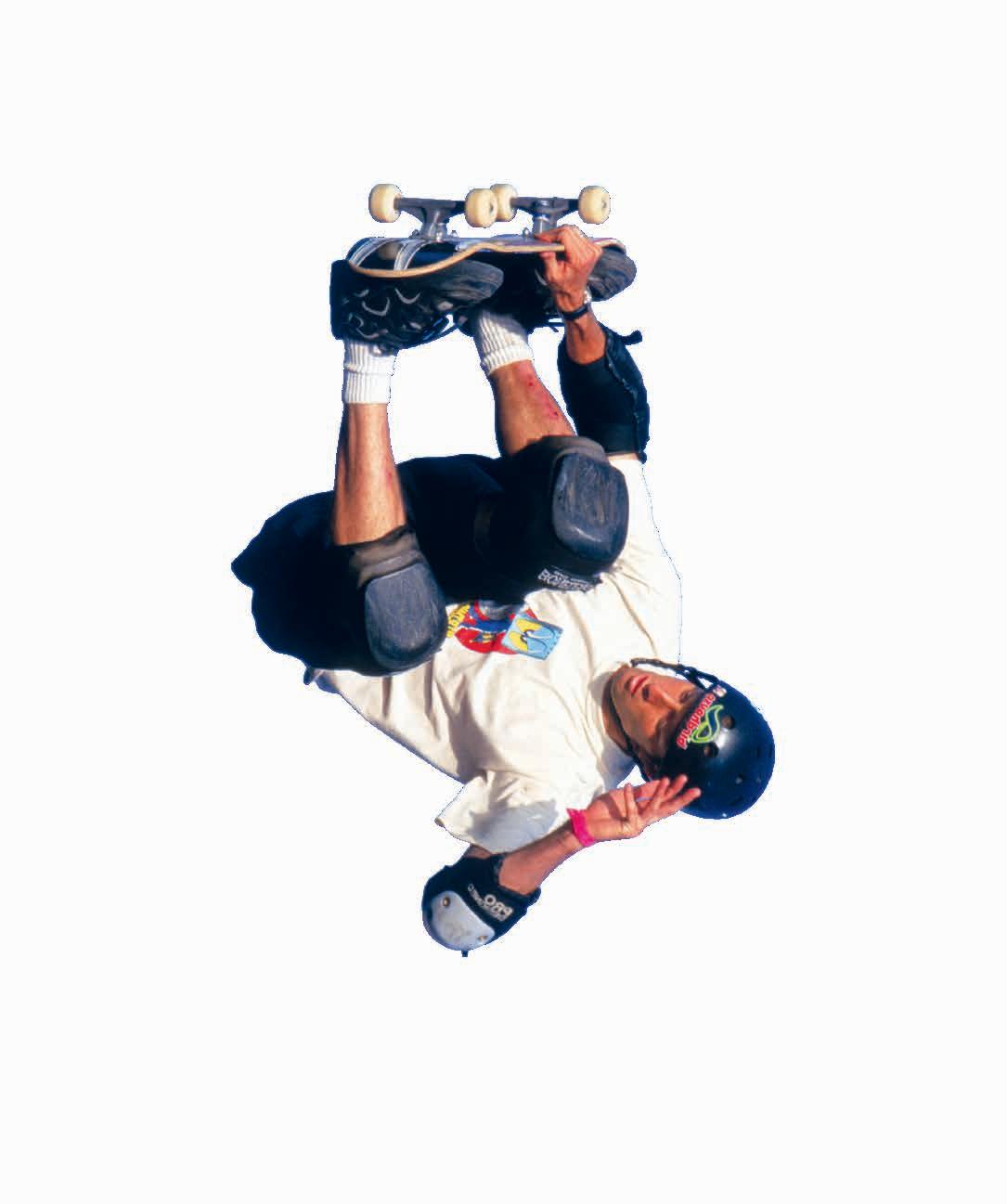


From soaring leaps and record-breaking sprints, to climbing a 900-metre rock face without ropes and skydiving from the edge of space, we celebrate 20 feats of speed, strength and stamina that will leave you inspired – and amazed!
Continued on next page



296
The speed in kilometres per hour pedalled by America’s Denise Mueller-Korenek in 2018 to become the fastest human being on a bicycle. She achieved this incredible feat by riding in the slipstream of a specially modified drag racing car, which shielded her from wind resistance.
884
The height in metres climbed by America’s Alex Honnold, right, in 2017 as he became the first and only person to climb the smooth and almost vertical face of a rock formation known as El Capitan in California, United States, on his own and without any climbing ropes. This is called free solo climbing.
10
The time in hours that American Mark Jordan juggled a football with his feet without it touching the ground, in 2018.
8
The time in hours it is thought to have taken Pemba Dorje, a Sherpa from Nepal, to climb Mount Everest in 2004, the fastest ever ascent of the world’s highest mountain.
643
The number of people in the world’s largest human pyramid, in 1981. The pyramid, which was built by people

standing on each other’s shoulders, had nine levels and was completed when JosepJoan Martínez Lozano reached the top, 13.34 metres in the air.
119
The time in minutes it took Eliud Kipchoge from Kenya to run a marathon in 2019 to become the only human to have run the distance in

Left: the Swiss athlete Marcel Hug is known as the ‘Silver Bullet’ because of his speed and precision when racing.
The chart below shows the evolution of the world record for the 100 metres sprint over more than 100 years, for both women (in dark green) and men (light green). As diet and training methods have improved, so athletes have run faster and faster.
Some athletes have broken the world record multiple times, but only their quickest time is shown here.
It took Alex Honnold four hours to climb to the top of El Capitan – without using any ropes!safety
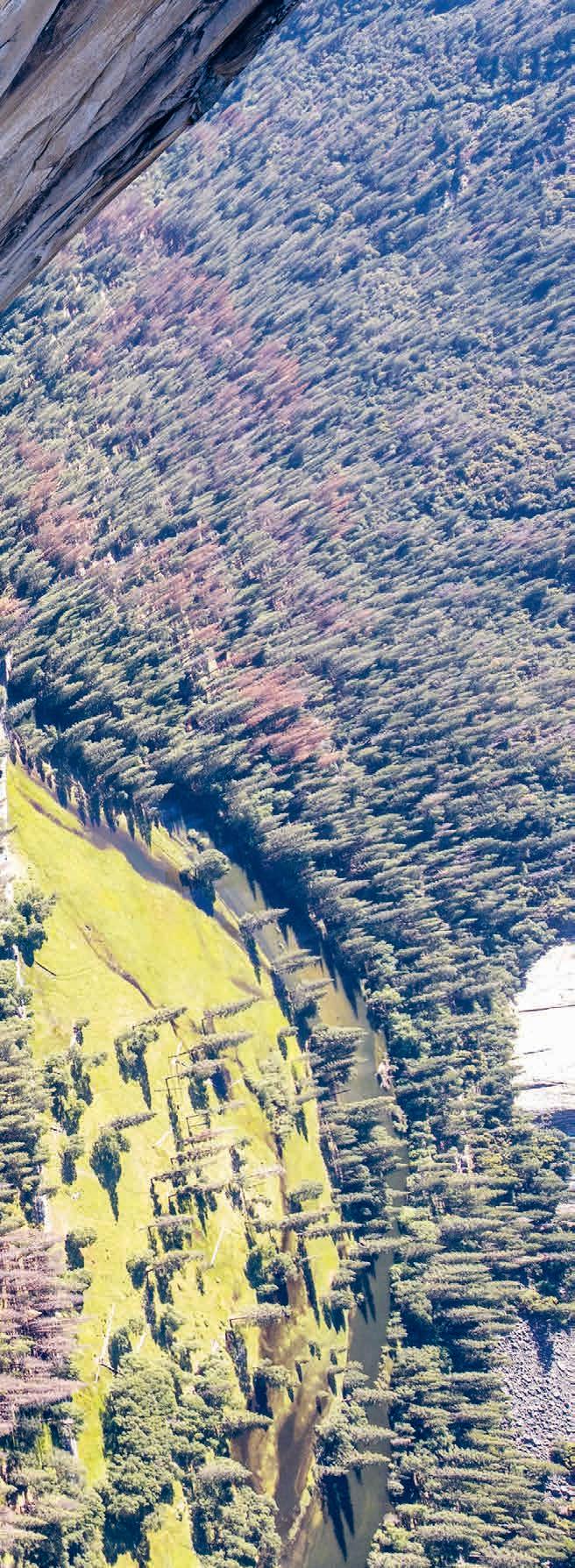
under two hours. Kipchoge’s official time was 1 hour, 59 minutes and 40 seconds.
100
The number of minutes it took Marcel Hug of Switzerland to complete a marathon in a racing wheelchair in 2023, setting a stunning new world record time of 1 hour, 17 minutes and 47 seconds.

Cuban athlete Javier Sotomayor holds the record for the men’s high jump, set in 1993 with an astonishing leap of 2.45 metres. That’s like soaring over a bar placed just below the bottom of a professional basketball net! Thirtytwo years later, no human has jumped higher. The chart below shows how high jump records have improved.

10
Romanian gymnast Nadia Comăneci was just 14 years old when she made Olympic history in 1976 by scoring the first-ever perfect 10 in gymnastics. Competing in Montreal, she wowed the judges with a flawless routine on the uneven bars, earning seven perfect 10s at the Games. She became a global sensation.
900
The number of degrees the American Tony Hawk spun round in mid-air on a skateboard – that’s two and a half complete turns – in 1999 to become the first ever skateboarder to pull off this trick (called the 900). He finally landed it after ten failed attempts in the competition.
Continued on next page
Reigning 100m world record holders
Florence Griffith Joyner and Usain Bolt.


Continued from previous page
59 hours
One of the longest ever competitive table tennis matches was between Poland’s Alojzy Ehrlich and Romania’s Farkas Paneth in 1936. The first rally alone lasted for 2 hours and 12 minutes and involved an estimated 12,000 shots. The referee had to be replaced during the match because his neck hurt from watching the ball go back and forth. Ehrlich triumphed in the end after Paneth finally lost patience, hit the ball wildly above his opponent’s head and ran screaming from the court!
49
The height in metres above the Niagara Falls gorge at which France’s Charles Blondin balanced on a 396-metre-long tightrope. In 1859 he became the first person to cross the thunderous waterfalls in this way. Blondin later crossed Niagara Falls in an even riskier way: by walking across a tightrope while wearing stilts!
28


The number of Olympic medals won by American swimmer Michael Phelps between 2004 and 2016, the most by any athlete.
21.59
The height in centimetres of the limbo bar under which Shemika Campbell of the United States danced in 2010, to set a new world record.

It took Ross
The Georgian weightlifter Lasha Talakhadze, right, is one of the strongest humans on Earth. In 2021, he set a new world record in the clean and jerk by lifting a staggering 267 kilograms. This is heavier than a large piano or, incredibly, about the same weight as lifting two giant pandas above your head! The clean and jerk is a demanding two-part lift that requires explosive power, perfect balance and technique. Throughout his career, Lasha has set more than 25 weightlifting world records, making him one of the great names in the history of the sport.


The number of days it took British endurance athlete Ross Edgley, pictured bottom left, to swim all the way around mainland Great Britain in 2018 – a world first. Battling jellyfish stings and storms, Edgley swam up to 12 hours a day and covered nearly 1,800 miles. He took rests on a support boat but didn’t set foot on land during his epic swim.
The largest number of balls juggled at the same time, by the UK’s Alex Barron in 2012.
The number of top division sumo championships won by the mighty Hakuhō Shō – the most in the Japanese sport’s 1,500-year history.
It took brave skydiver Felix Baumgartner 9 minutes and 9 seconds to reach the ground!

The triple jump is one of athletics’ most explosive events. It’s not just one leap, but a powerful sequence
of three: a hop, a step and a final soaring jump into the sandpit. Athletes sprint at full speed before launching

Above: John Isner celebrates winning the longest professional tennis match ever played.
11 hours, 5 minutes
The longest ever professional tennis match was played between America’s John Isner and France’s Nicolas Mahut at the Wimbledon Championships in 2010. The pair played a total of 183 games spread across three days before Isner won the decisive fifth set 70–68.
1,357.6
The speed in kilometres per hour reached by Austrian Felix Baumgartner while completing the world’s highest skydiving jump in 2012. Baumgartner leapt from a hot-air balloon floating 39 kilometres above the Earth. As you can see from the photo on the left, it was a very long way down!
themselves off one foot, landing on the same foot for the hop, switching feet for the step, and finally leaping into
the air for the jump. Below you can see the current world records for both the triple jump and the long jump.
Take a close look at the square in the middle of the image above. Does it look a little strange? Are its sides bending inwards in the middle? Most people see the pink lines as slightly curved. But here’s the surprising truth: all the pink lines are actually perfectly straight!
This mind-bending effect is called the Ehrenstein-Orbison Illusion, named after the scientists who studied it. When straight lines are placed against a background of concentric circles, our brains can be tricked into seeing the straight lines as curving in the opposite direction to the curve of the circles. Why does this happen? Scientists aren’t completely sure,
but one theory suggests that it’s to do with the angles at which the square’s lines intersect with the circles. Our visual system misreads these angles, causing the straight lines to look curved. It could also be to do with the fact that our brains tend to see whole patterns and shapes rather than their individual parts – a phenomenon known as the Gestalt effect. Still not convinced that the pink lines are straight? Visit whatonearth.co.uk/ illusions or scan the QR code to see the pink lines without the circles. The square’s true shape will be proved once and for all!

Inside this 10-page activity section, you will find quizzes to do, puzzles to solve and fun activities to try. And don’t worry if you get stuck – all the answers are on page 40.

1
What nickname is sometimes given to manatees, which are large marine mammals (shown above)?
a. Sea lions
b. Sea cows
c. Sea hippos
d. Sea horses
2
Which of the following sea creatures has blue-coloured blood?
a. Jellyfish
b. Octopus
c. Seahorse
d. Lobster
3
What is the name of the world’s fastest bird?
a. Golden eagle
b. Saker falcon
c. Peregrine falcon
d. Duck
4
Which of these parts of their anatomy can frogs use to exchange gas with their surroundings when they breathe?
a. Skin
b. Lungs
c. Lining of the mouth
d. All of the above

1 How many match courts are there at Wimbledon, shown below, home of the world’s oldest tennis tournament?
a. 8
b. 12
c. 18
d. 22
2
What did Tim Berners-Lee invent in 1989 while working at the famous CERN laboratory?

1
d. Sand HUMAN WORLD
a. The smartphone
b. The World Wide Web
c. Online shopping
d. Wi-Fi
3
Which of these numbers is considered unlucky in China and in other Asian cultures?
a. 0
b. 4
c. 8
d. 11
4
Traditionally, what is used as the main ingredient to make glass?
a. Limestone
b. Clay
c. Salt
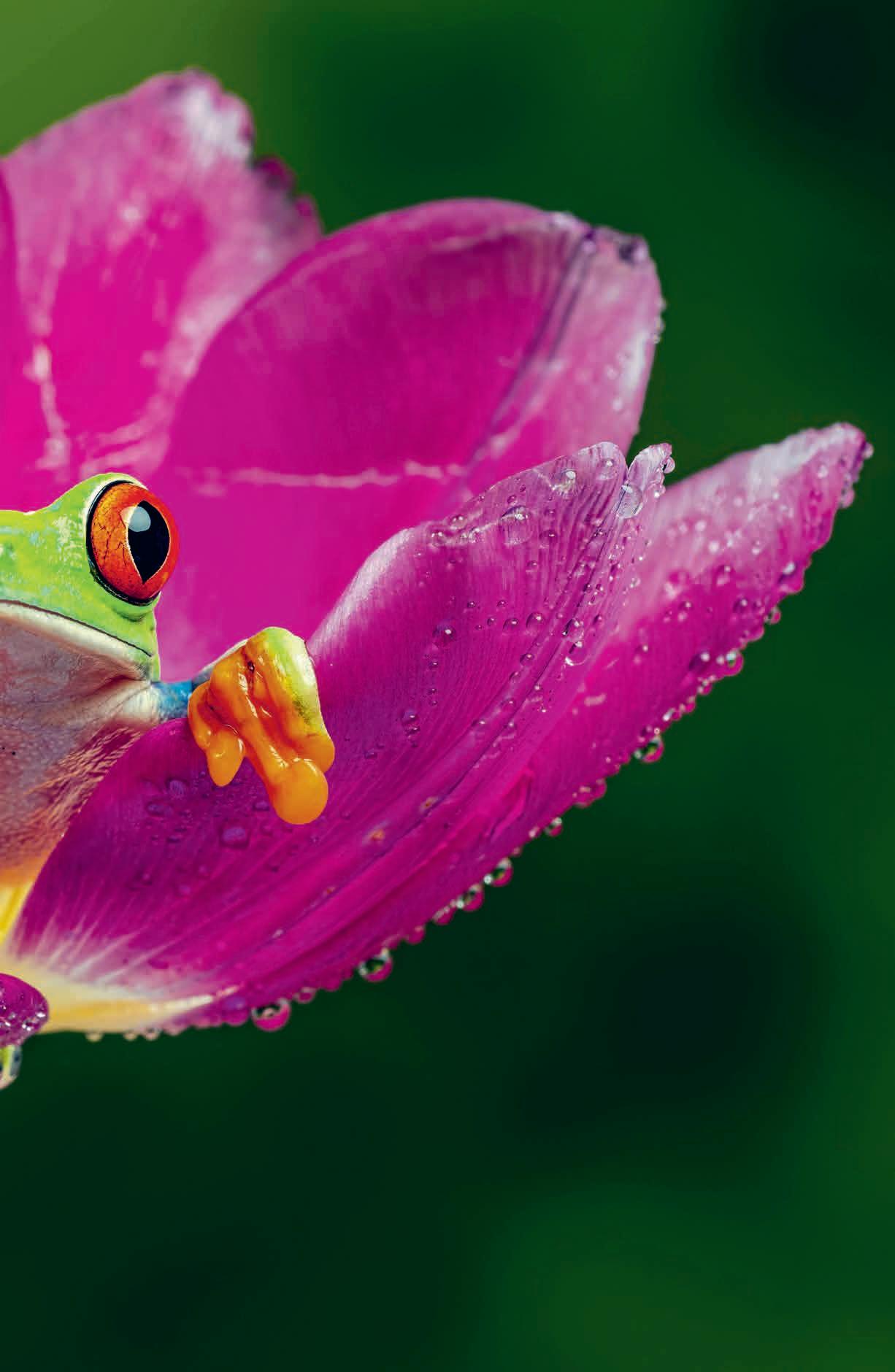
Eachemojisequenceonthe rightrepresentsanidiom –acommonphrasewith ameaningthatisn’talways obvious from the words themselves.Forexample, ‘spillthebeans’means to reveal a secret. Can youfigureoutwhichidiom isbeingshownineach ofthefiveemojipuzzles?
Can you find your way through our maze of square rooms? Enter through the door marked with the red arrow, then try to find your way to the exit by going through the correct sequence of open doors. Good luck!
In the triangles below, the numbers inside the squares are the sum of the two numbers in the connected circles. For example:
Can you work out which number should appear in each of the circles? All the numbers in the circles are between 1 and 10 and a number can only be used once in each triangle.
Fill all the empty squares so that every row, column and 3x2 box contains each of the numbers 1 to 6.
Fill in the missing numbers so that every row and column includes the numbers 1, 2, 3 and 4. Use the inequality signs as clues and make sure numbers always obey the inequality sign between them. This means that the arrows between the numbers always point towards the smaller number.
Here is an example:
In the three squares shown above, the number A must be less than 3 and greater than the missing number B. We know all the numbers must be between 1 and 4 , so therefore A must be 2 and B must be 1.
1 Approximately what percentage of our DNA does a human being share with a chicken?
a. 20%
b. 40%
c. 60%
d. 80%
2
What is the name of the air sacs in your lungs that absorb oxygen into your bloodstream as you breathe?
a. Ventricles
b. Alveoli
c. Villi
d. Broccoli
3 What is arachibutyrophobia a fear of?
a. Giant spiders
b. Your picnic being stolen by ants
c. Peanut butter becoming stuck to the roof of your mouth
d. Garden gnomes
4 What type of blood cells help your body to fight infection?
a. Red blood cells
b. White blood cells
c. Platelets
d. Plasma cells









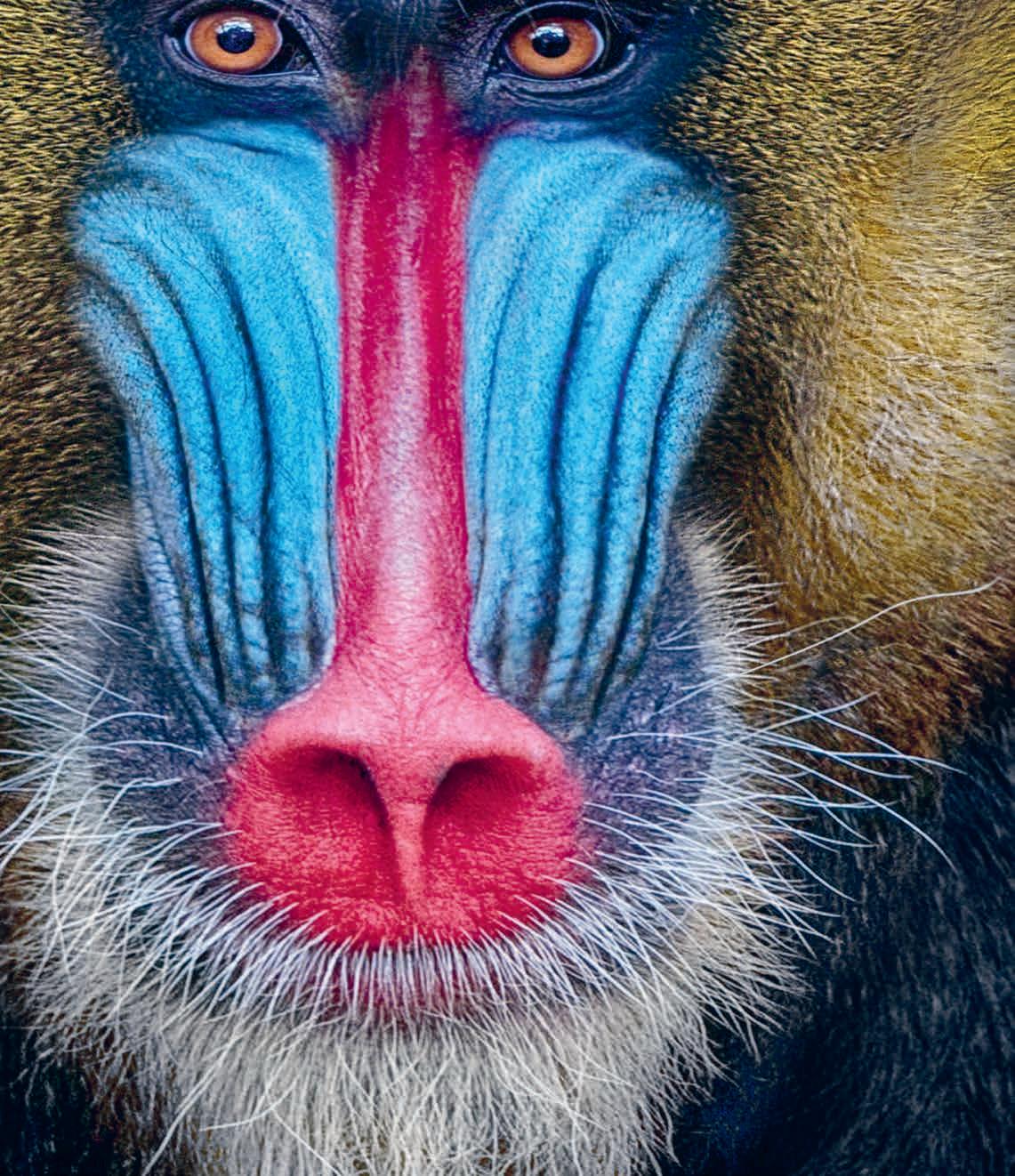

Four sneaky animals are hiding somewhere in these photos. Can you find them – and tell what kind of animals they are?

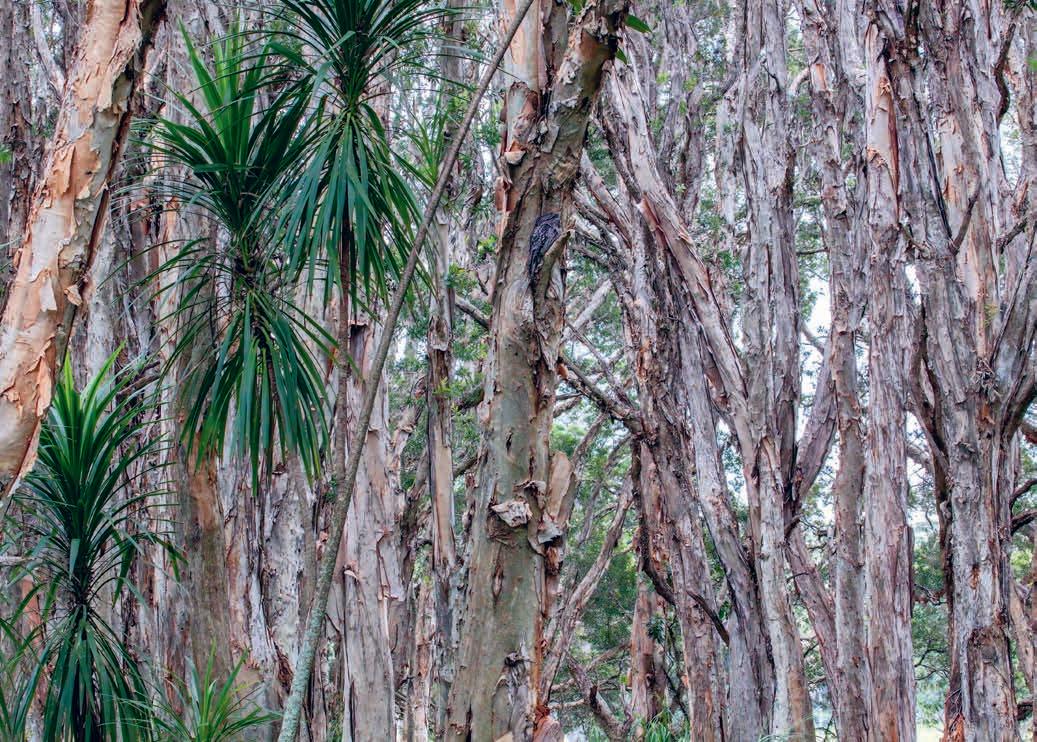

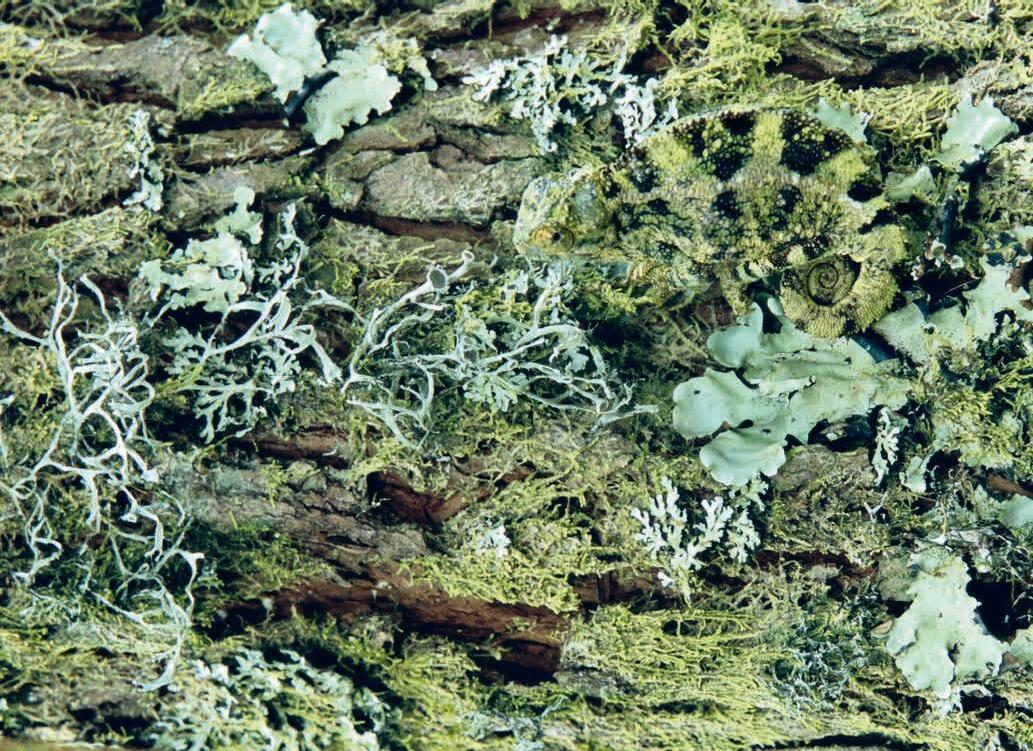
1 Which of the following objects has NOT been left behind by astronauts on the surface of the Moon?
a. Golf balls
b. Bags of poo
c. A television
d. A copy of the Bible
2 What is the name of the galaxy that contains our own solar system?
a. Cartwheel Galaxy
b. Milky Way
c. Andromeda
d. Whirlpool Galaxy

3 What is the second brightest object in the night sky after the Moon?
a. Mars
b. Polaris, the Pole Star
c. Jupiter
d. Venus
4 How many planets in our solar system are larger than Earth?
a. 2
b. 3
c. 4
d. 5
Use the word wheel to help find the answers to the six clues below. All the answers contain the middle letter and each letter can only be used once.
Clue: a vehicle designed to transport astronauts to other planets (9 letters).
Answer:
Clue: the different shapes the Moon appears to take during a lunar month (6 letters).
Answer:
A I C S P P S E
Clue: the French word for chair (6 letters).
Answer:
Clue: a sweet fleshy fruit that features in a famous book by Roald Dahl (5 letters).
Answer:
Clue: the title of the new FACTopia! book (4 letters).
Answer:
Clue: clothing often worn by superheroes (4 letters).
Answer:
Can you find the 20 space-related words in our jumbo word search puzzle? Good luck!
Draw a line to connect each pair of planets. You can’t use diagonal lines and the lines can’t cross or touch each other. You must fill the whole grid with lines but only one line is allowed in each square.
A link word is a word that can be added to the end of one word and the start of another word to create two new words. For example, the word FRIEND can be added to the end of GIRL to create GIRLFRIEND, and also added to the start of SHIP to create FRIENDSHIP. Can you think of link words that fill the gaps below and create two new words in each case?
1
The Rocky Mountains, pictured on the right, are found in North America. What is the name of the highest peak in the Rocky Mountains?
a. Mount Elbert
b. Mount Rushmore
c. Mount Kilimanjaro
d. Mount Whitney
2 When a country is surrounded by other countries and does not have its own coastline, geographers say that it is landlocked. Which of the following countries is landlocked?
a. Mali
b. Saudi Arabia
c. Portugal
d. Austria
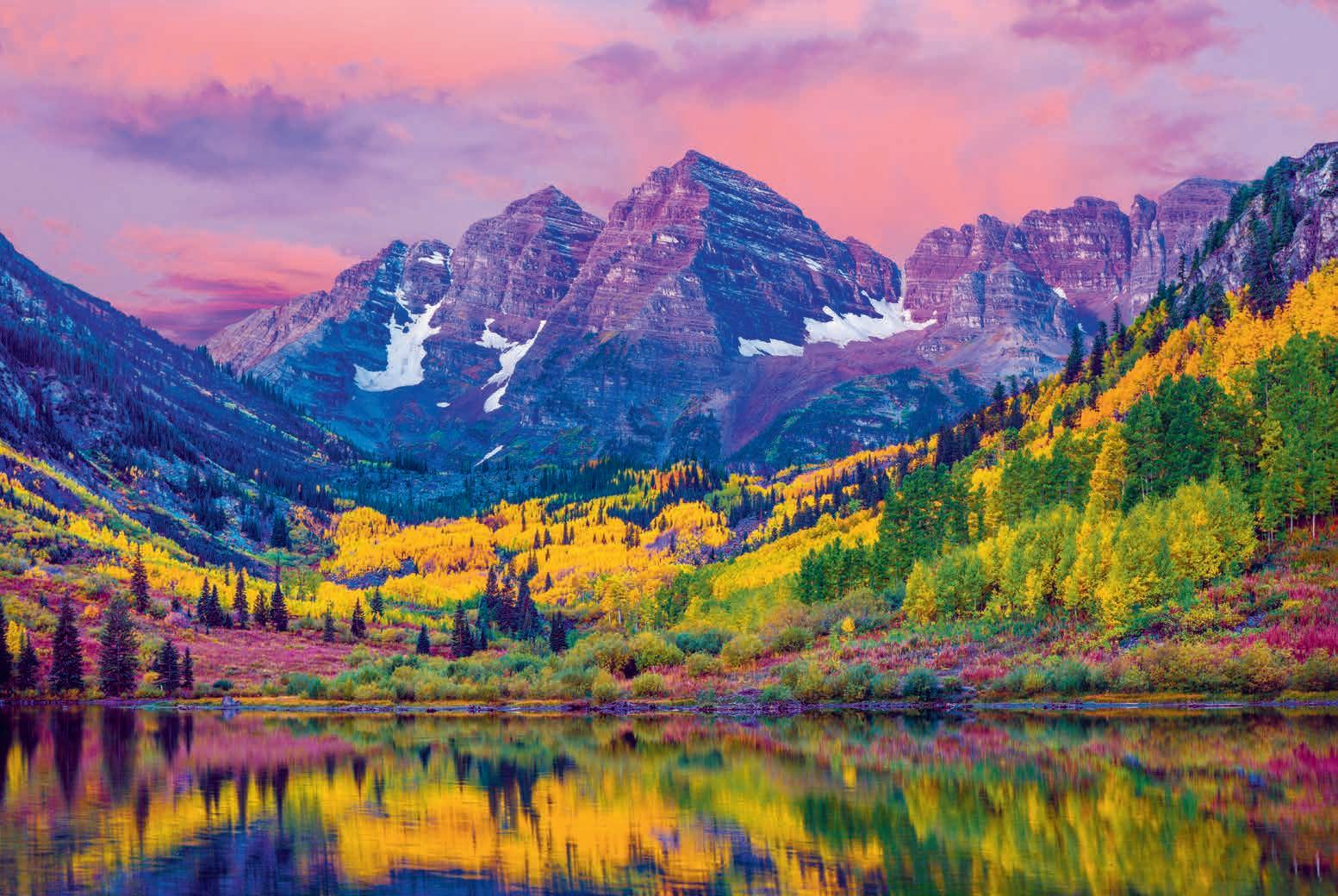
3
Which country is famously the home of kiwis – both the bird and the fruit! (Clue: it is found in the Southern Hemisphere.)
a. Australia
b. New Zealand
c. Papua New Guinea
d. Fiji
4
Which South American country, founded in 1822, uses the national flag pictured above left?
a. Argentina
b. Venezuela
c. Bolivia
d. Brazil
The six-sided shape on the left can be folded up to form a cube. Only two of the cubes on the right can be made by it. Which are they?
Can you spot all 2O differences between these two scenes from outer space?
CUBE IT!
Word Search
Hidden Animals


Changing Rooms
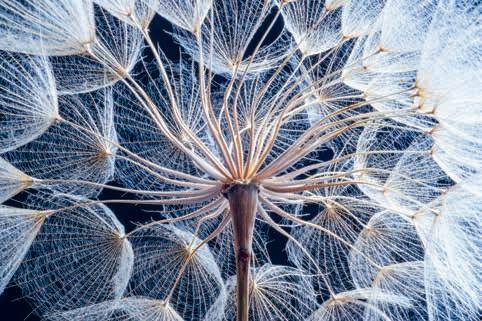


Emoji Idioms





Word Wheel
1. SPACESHIP 2. PHASES
3. CHAISE 4. PEACH
5. EPIC 6. CAPE
Link Words
1. HONEYMOON MOONLIGHT
2. FOREHEAD HEADLINE
3. LIFEBOAT BOATHOUSE
Quiz Answers
Animals 1. b, 2. b, 3. c, 4. d; Human World 1. c, 2. b, 3. b, 4. d; Human Body 1. c, 2. b, 3. c, 4. b; Space 1. c, 2. b, 3. d, 4. c; Geography 1. a, 2. d, 3. b, 4. d.
A. It’s raining cats and dogs, which means ‘it’s raining heavily’. B. Cry wolf, which is to ask for help when it’s not needed. C. A piece of cake, which means that something is easy to do. D. I smell a rat, which you say when you are suspicious of something. E. Cool as a cucumber, which means very cool!
Number Triangles
Cube It!
Connect the Planets
Sudoku



By
Hoare
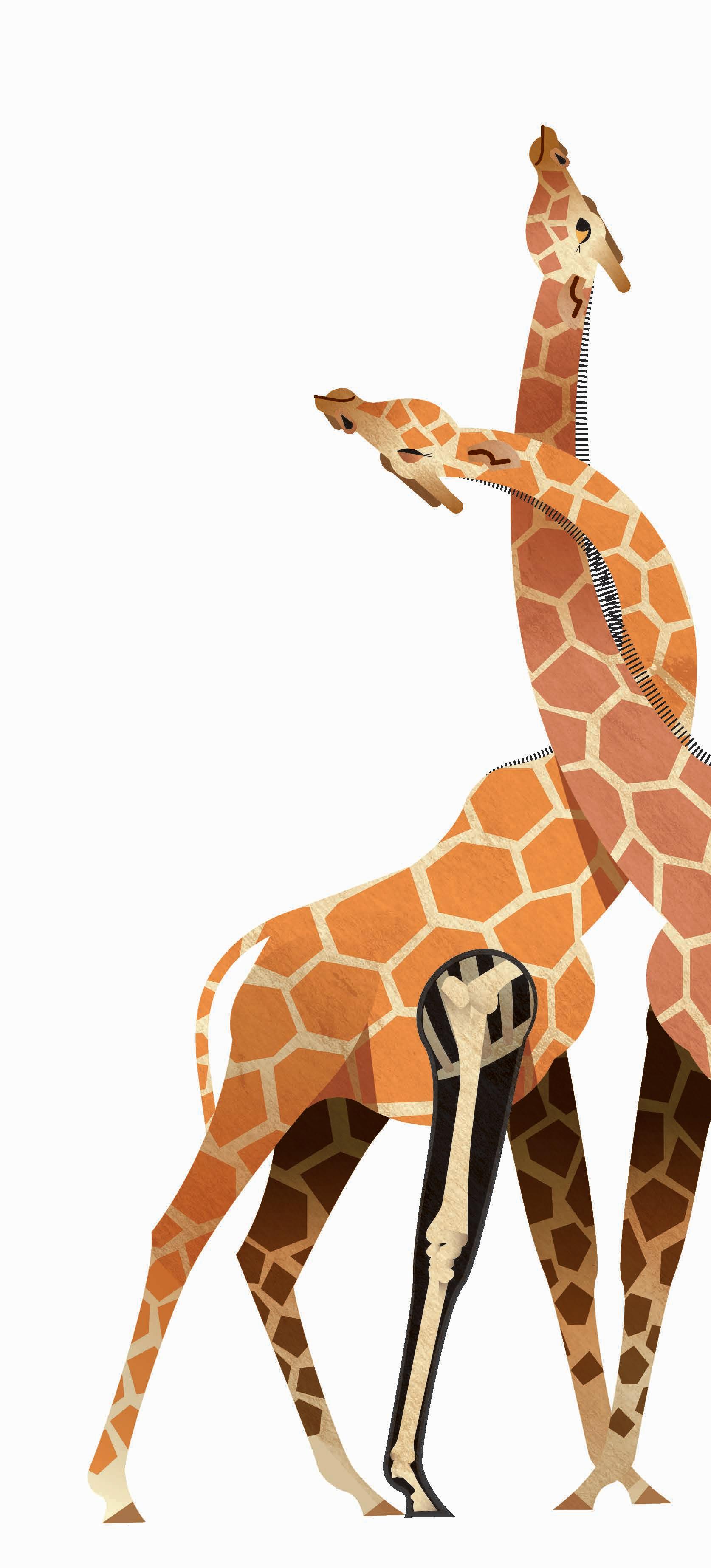























































































Humans are animals, too! Join us as we explore the amazing ways we are just like them.


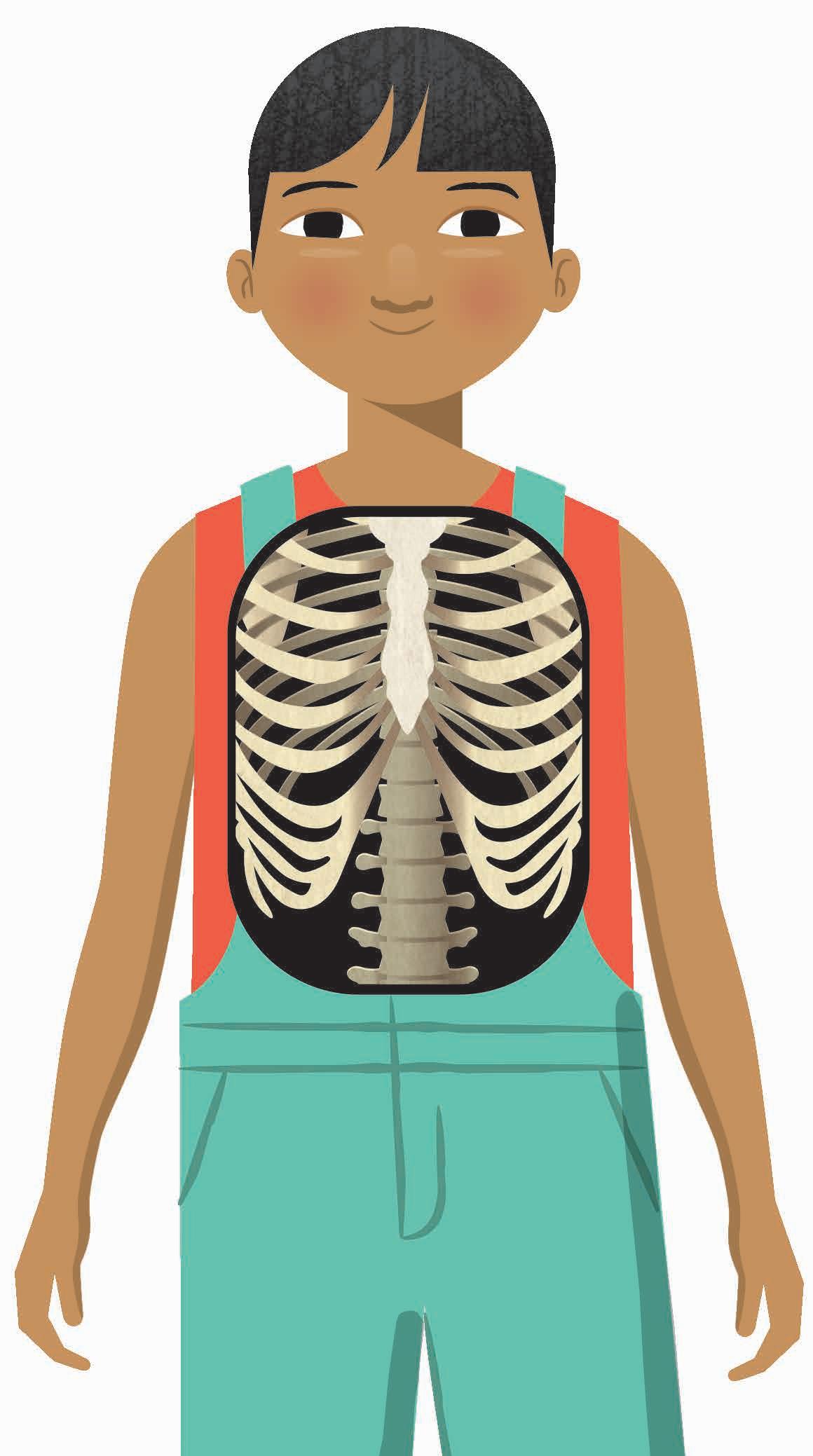

Giraffes hum together at night. Scientists think this could be so they stay connected in the dark.
DID YOU KNOW?


Feelings are with us all the time and they can be very powerful indeed. When we feel happy or sad, angry or afraid, it’s often all we can think about. Everyone has feelings like these – we can’t help it. Many other animals also experience them, just as we do. Even insects have feelings! We can never be sure what it feels like to be a bumblebee or a koala because they obviously can’t tell us. But if we watch how the bumblebee and koala behave, it’s possible to get some idea of what could be
going on inside their brain and body. Scientists who study animals are called zoologists. Their research is revealing lots of clues about how feelings might work.
What are feelings for, though? That’s a very good question! One way of looking at feelings is that they might help animals to survive. If a rattlesnake is in danger, it feels afraid, which makes the snake hiss and shake its tail to defend itself. Feelings could be the brain and body’s way of telling an animal what it needs to do to stay alive.
African elephants will stand over the body of a dead family member for days. Are they feeling sad and grieving for their lost relative? They might be, but we just don’t know...
Scientist Paul Ekman identified six basic emotions: joy, sadness, anger, disgust, fear and surprise.



Many birds – from parrots to these puffins – seem to experience love for their partner. This powerful feeling is even more obvious in mammals. The close bond between an orangutan mum and her baby is surely a sign of love, too.


Many animals show signs of fear. Koalas cry out, like a human baby screaming. Many snakes hiss, while wolves bare their teeth and their hair stands on end.
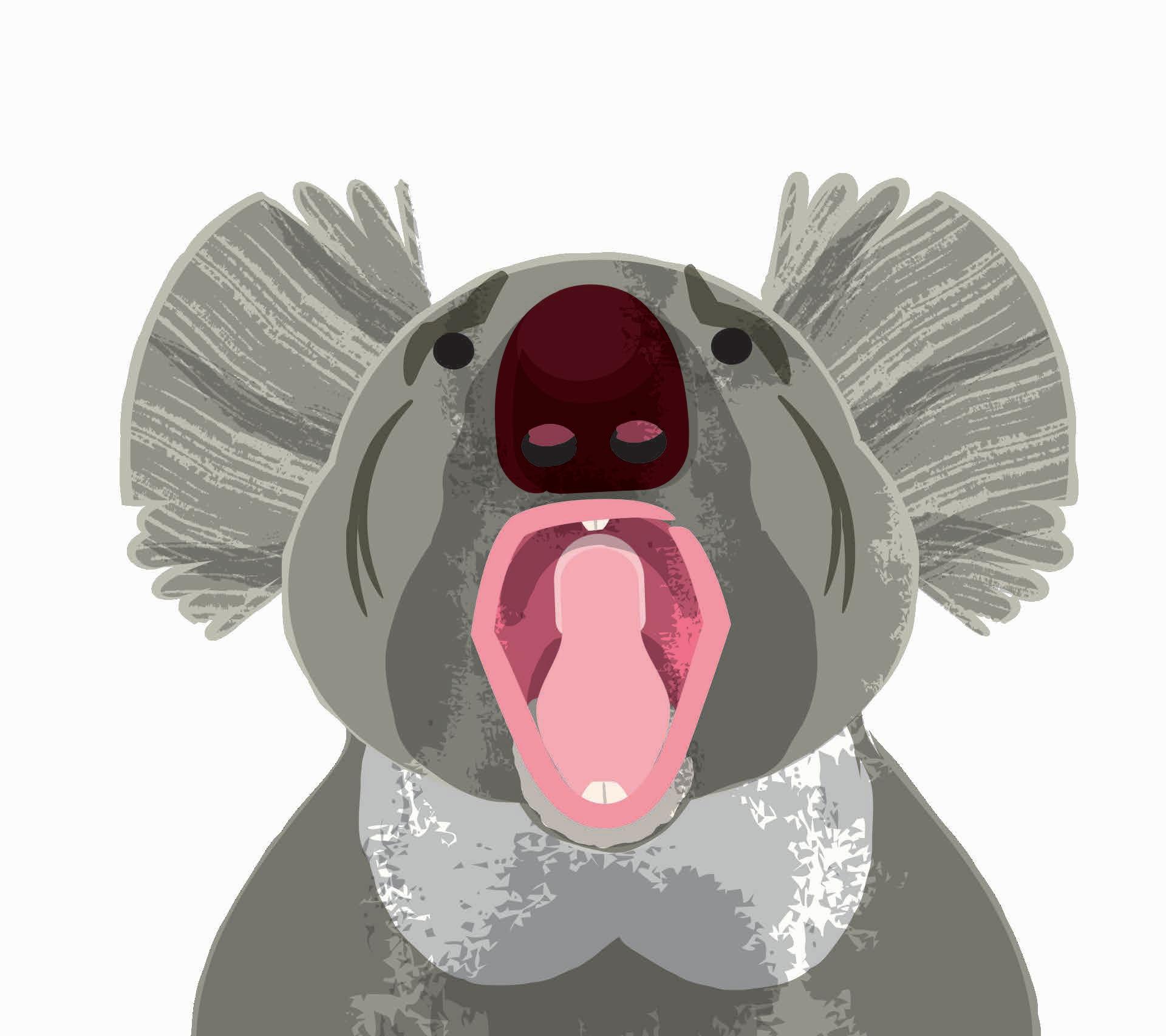

Tickling a rat!

Humans aren’t the only animals with a sense of fun. Bumblebees, otters and octopuses play just for the fun of it, too. Play is also a way for young paper wasps to develop muscle control and movement skills.
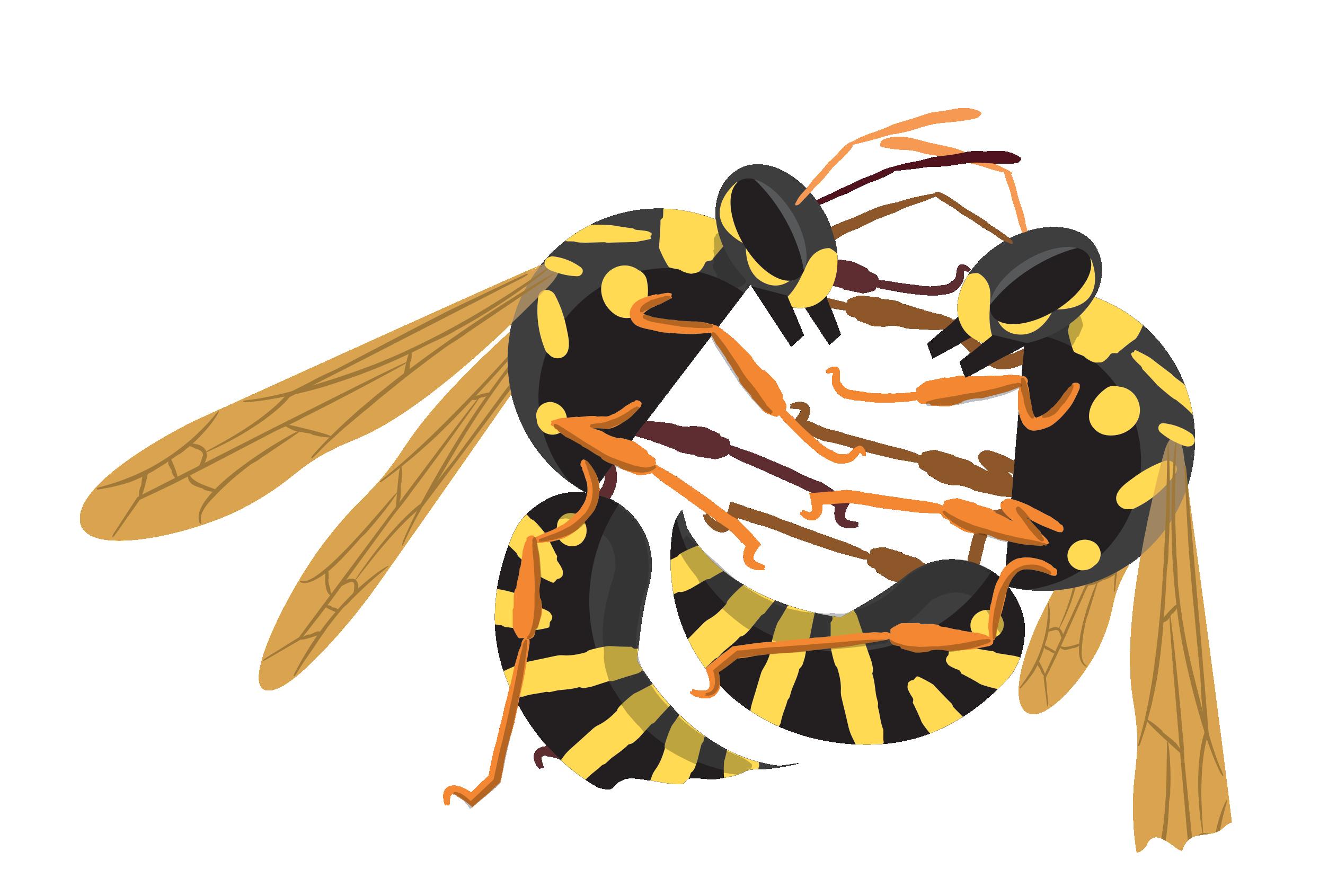
Like us, other animals appear to experience joy. Researchers found that rats enjoy having their tummy tickled! It makes them burst out in fits of high-pitched giggles. These rat ‘laughs’ are too high-pitched for us to hear but can be recorded with special microphones.
Do you love catching up with friends? If so, that’s no surprise, because humans can be very chatty! But we don’t just communicate by talking. We also use visual signals, touch and smell. Other animals get their message across in a variety of ways, too.
Many animals communicate with sound, especially when they can’t see each other. They may sing to attract partners, give alarm calls that warn of danger, and make noises to stay in touch with the rest of their family or group.
Animals also move their body or change their appearance to communicate. They might wiggle a wing, wag a tail, flap a fin or even completely change colour. These displays are like talking in secret code. When animals meet, they communicate with touch, too. A stroke or a poke, or a lick or a kick, can reveal if they want to be friends or not! Most amazingly of all, some animals have a kind of invisible message system. They produce chemical signals called pheromones. These scents linger a long time and spread through the air, water and earth. Pheromones send messages to other members of the same species.


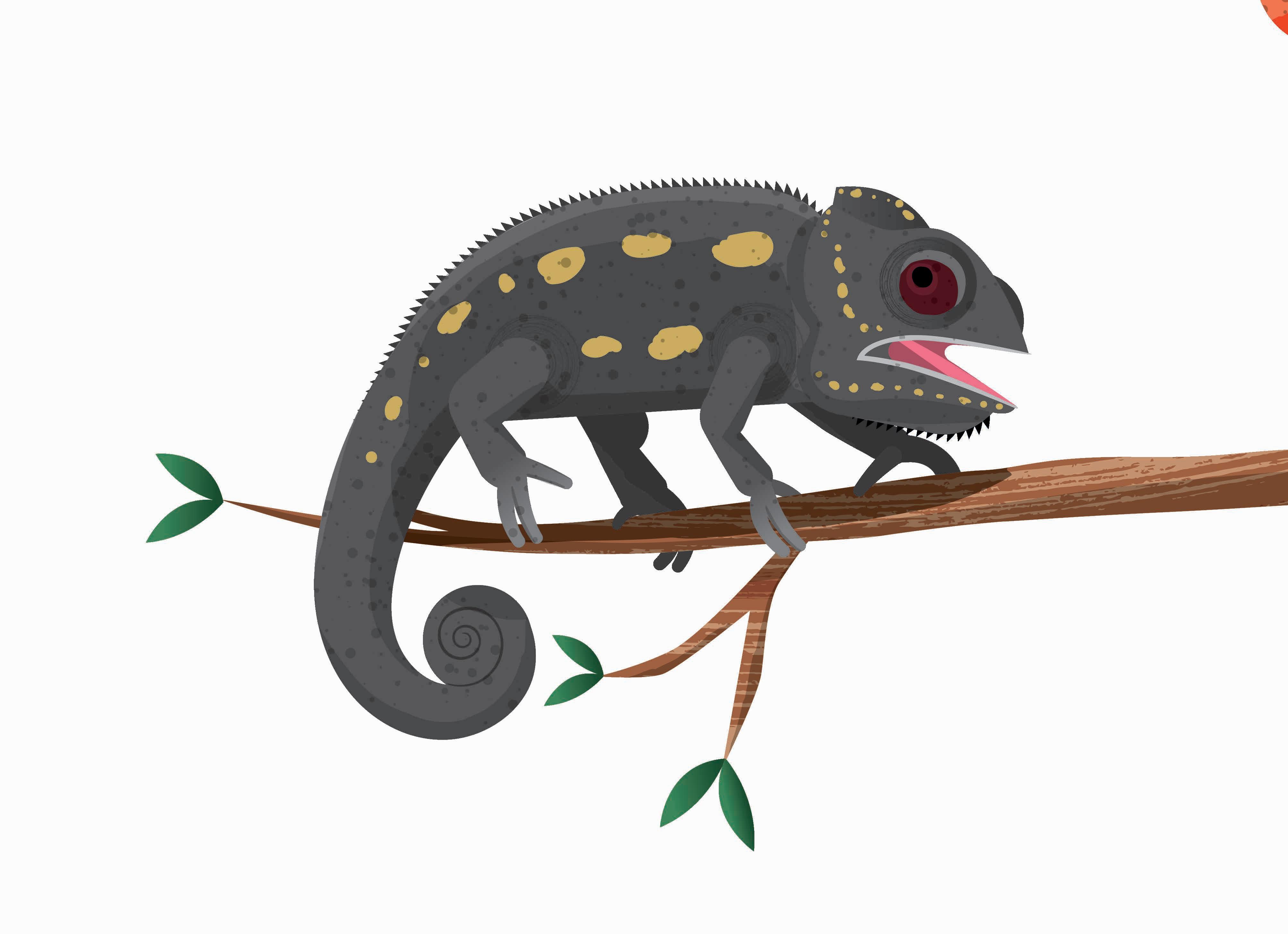
Chameleons have special skin cells that change colour to show their mood. A green chameleon is happy and relaxed. An excited chameleon is usually red or yellow. But if a chameleon is black, it is stressed.
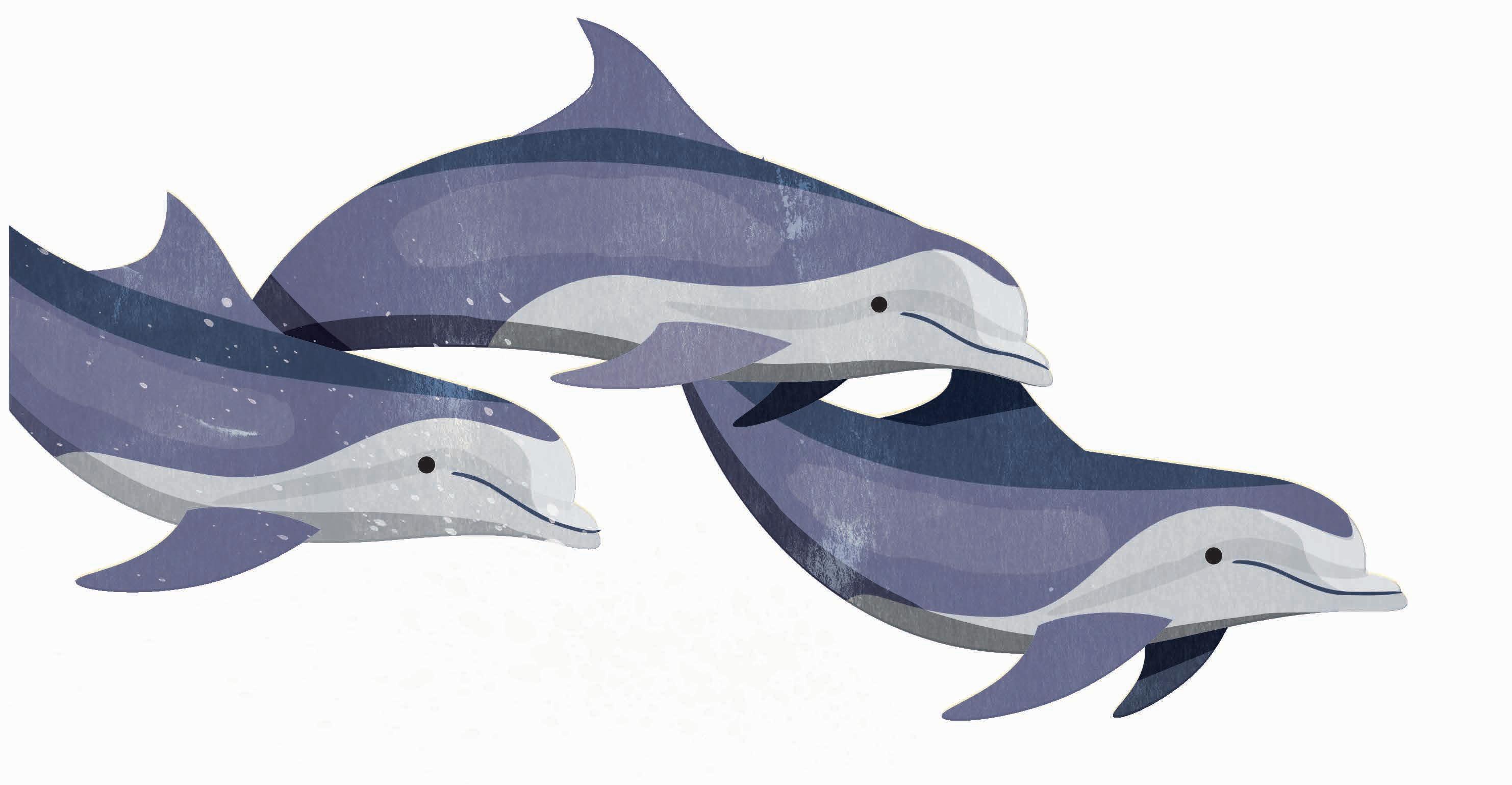
Animals – just like humans –have personalities and recognise each other as individuals. Bottlenose dolphins even name themselves! Every dolphin creates its own special whistle that is unique to it. The dolphins use their personal names to call to their group as they swim through the ocean.

Follow the leader
Ants follow chemical trails left by other ants from their nest.

Watch out!
Male fiddler crabs have a huge claw. They wave it in the air to threaten other male crabs.





Lighting up
Lantern fish produce light to communicate in the dark.

Some animals start to communicate before they are even born. Baby crocodiles and baby birds call to their parents from inside their eggs to let them know when they’re just about to hatch.
Companion animals soon learn to communicate with us. They understand the tone of our voice and are able to ‘read’ our body language. In turn, we can tell how they are feeling from the way they behave. Humans and animals can share a strong bond.


Why do dogs sniff each other’s bottoms?

If you’ve ever been up close to a helicopter, you know they’re noisy indeed! A helicopter lifts off the ground using its rotor, or spinning blades. As the helicopter flies, each blade creates an area of whirling air, known as a vortex, at its tip. As the next blade hits the vortex, it makes a loud sound.

A dog’s sense of smell is up to 100,000 times better than a human’s. Dogs use their noses to explore. One whiff with their super-sniffer gives dogs lots of information. By sniffing, a dog can find out how old, how healthy and how friendly another dog is.

So, when one dog sniffs another dog’s bum, it’s getting to know its new friend. Bum sniffing is also how dogs like to say hello!
WACKY FACT
A dog can detect two different smells at a time –one with each nostril!
Dogs’ noses have smelldetecting cells. Dogs with longer noses have more of these cells, so they are better at smelling than dogs with shorter noses.
WACKY FACT
Some helicopters are used to fight fires. They dump buckets filled with lots of water on flames from above.
A helicopter can fly sideways and backwards.
Head hair grows about 2 millimetres a week. That’s about the same length as the tip of a sharp pencil.



Helicopter technology can trace its origins back to a propeller toy from fourth-century China!
Your hairs pop up through the surface of your skin a little like grass pops up through the soil. The root of each hair is hidden just beneath the surface of the skin, in a tiny tube called a hair follicle. Follicles produce keratin, which is the stuff that hairs are made of. The more



keratin the follicles make, the longer your hair grows!
WACKY FACT
Human hair and nails are made out of keratin. That’s the same stuff that makes creatures’ claws, beaks, hooves, horns, scales and even feathers!

Close-up of a single hair
A hair grows in the skin inside a tiny tube called a follicle.
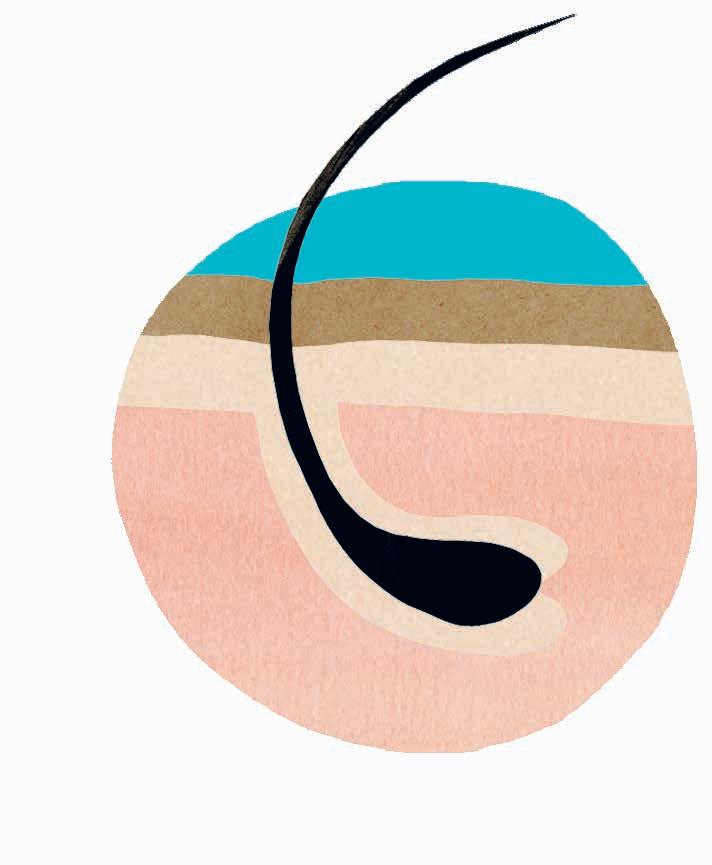

First Big Book of Why, writtenby SallySymes and Kate Drimmer,and First Big Book of How, writtenby SallySymes and Saranne Taylor,are both out now




Genius illustrator Andy Smith gets creative to celebrate the launch of his brilliant new book.
Fans of the amazing FACTopia! book series are in for a treat, because the eighth instalment – EpicFACTopia! – is out now and available to buy in a bookshop near you.
Any readers who live in the town of Lewes in Sussex, UK, will already be aware of this thrilling milestone in publishing history because Bag of Books, the superb local bookshop in Lewes, has just received the wonderful illustrated makeover that you can see in the photos above. Andy Smith, the
awesome illustrator of both the FACTopia! book series and our own Jokes & Riddles page, used tracing paper and paint to create this zany window display. If you live near Lewes, you should go and check it out!
But don’t worry if you can’t, because if you scan the QR code below, you can watch a video showing how Andy created his madcap masterpiece. For even more Epic FACTopia! fun, turn to page 16.




The What on Earth! inbox has been overflowing with photos and emails inspired by the How to Chat Fox article in our May issue.

The first was sent in by Jack, age 7, who is pictured on the left, on behalf of his favourite chicken, Fairy, shown on the right. According to Jack, Fairy loved ‘chicken out’ the magazine and was keen to learn to speak fox so that she could
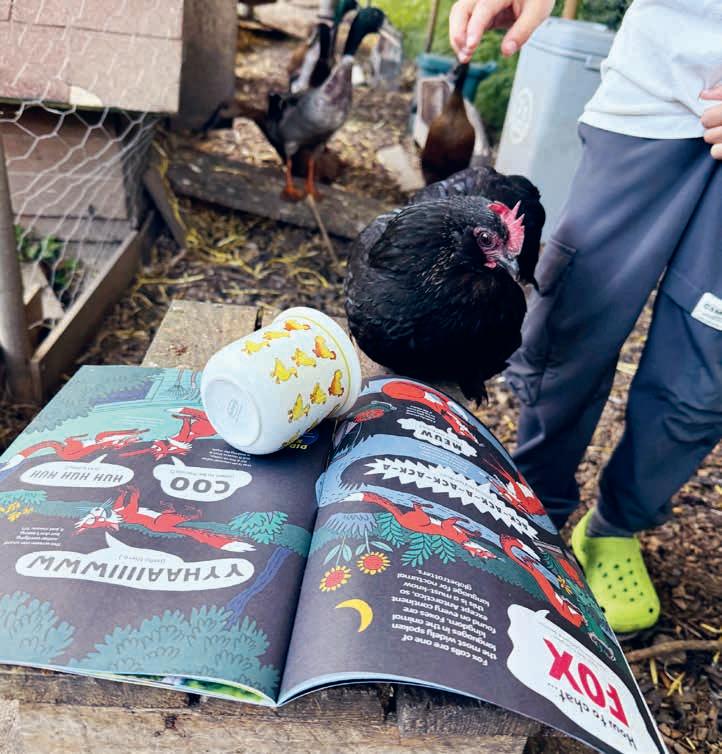
warn her fellow chickens what to say should a sneaky fox visit their coop uninvited.
Fairy will have to take some pronunciation lessons from Sophia, age 8, pictured right, as she speaks fox fluently! Scan the QR code to watch a video of Sophia performing a fantastic array of fox impressions.
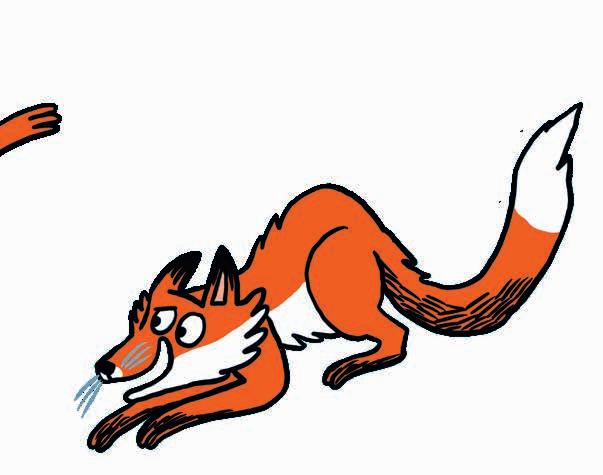
Congratulations to Jack, Fairy and Sophia.
Copies of How to Chat Chicken are on their way to you now!



a



Published by
What on Earth Magazines Ltd,
The Black Barn, Wickhurst Farm, Leigh, Tonbridge, Kent, TN11 8PS
Editor-in-Chief
Andrew Pettie
Editor Alison Eldridge
Art & Design Director
Mark Hickling
Senior Designer & Illustrator
Susanna Hickling
Production
Sarah Epton
Contributors
Andy Forshaw, Andy Smith, Paige Towler, Rose Davidson, Julie Beer, Kate Hale, Dr Nick Crumpton, Adrienne Barman, Dan Knight, Esperanza Hickling, May
With thanks to Andy Forshaw, Natalie Bellos, Helen Thewlis and the whole team at What on Earth Publishing
Editorial Consultant
Nancy Feresten
Business Development
David Falzani
CEO, What on Earth Magazines
Christopher Lloyd For Encyclopaedia Britannica
Mary McCudden, Director, Middle School and Elementary Products
Printing and distribution
Warners Midlands PLC, The Maltings, Manor Lane, Bourne, Lincolnshire, PE10 9PH
Editorial enquiries letters@whatonearth.co.uk
Subscriptions 01778 392479 whatonearth.co.uk
Picture credits
Library images from: Getty Images; Shutterstock; Alamy; iStock; NASA; ESA. Eureka: Ball Bike, James Bruton/XRobots
Copyright
2025 What on Earth Magazines Ltd.
All rights reserved. No part of this magazine may be reproduced or transmitted in any form, including photocopying, without permission in writing from the publishers.





























































Did you know that... ...most animal bodies, including ours, are shaped like tubes? ...animals all need the same things to survive, including oxygen, food and water?
...all animals exercise, send messages, have feelings, go to the toilet and sleep?






















What’sQuestion: the easiest place to find a diamond?
Answer: In a pack of cards! Question: How do you make varnish disappear?
Answer: Take away the ‘r’!



Send your name, age and favourite joke to our jokes editor May at jokes@whatonearth.co.uk. If your joke is featured in a future issue of the magazine, you will WIN a copy of Secret FACTopia!

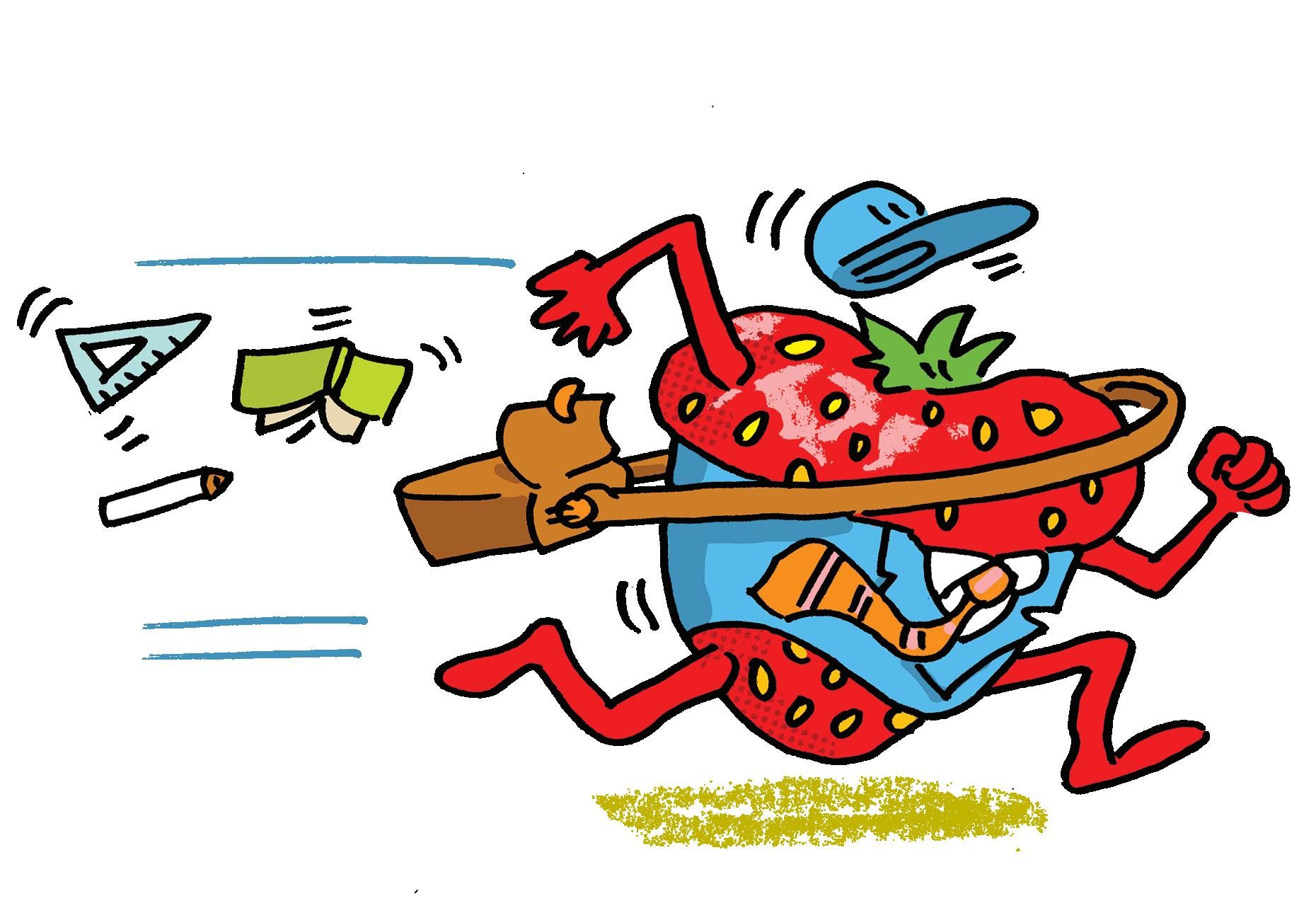

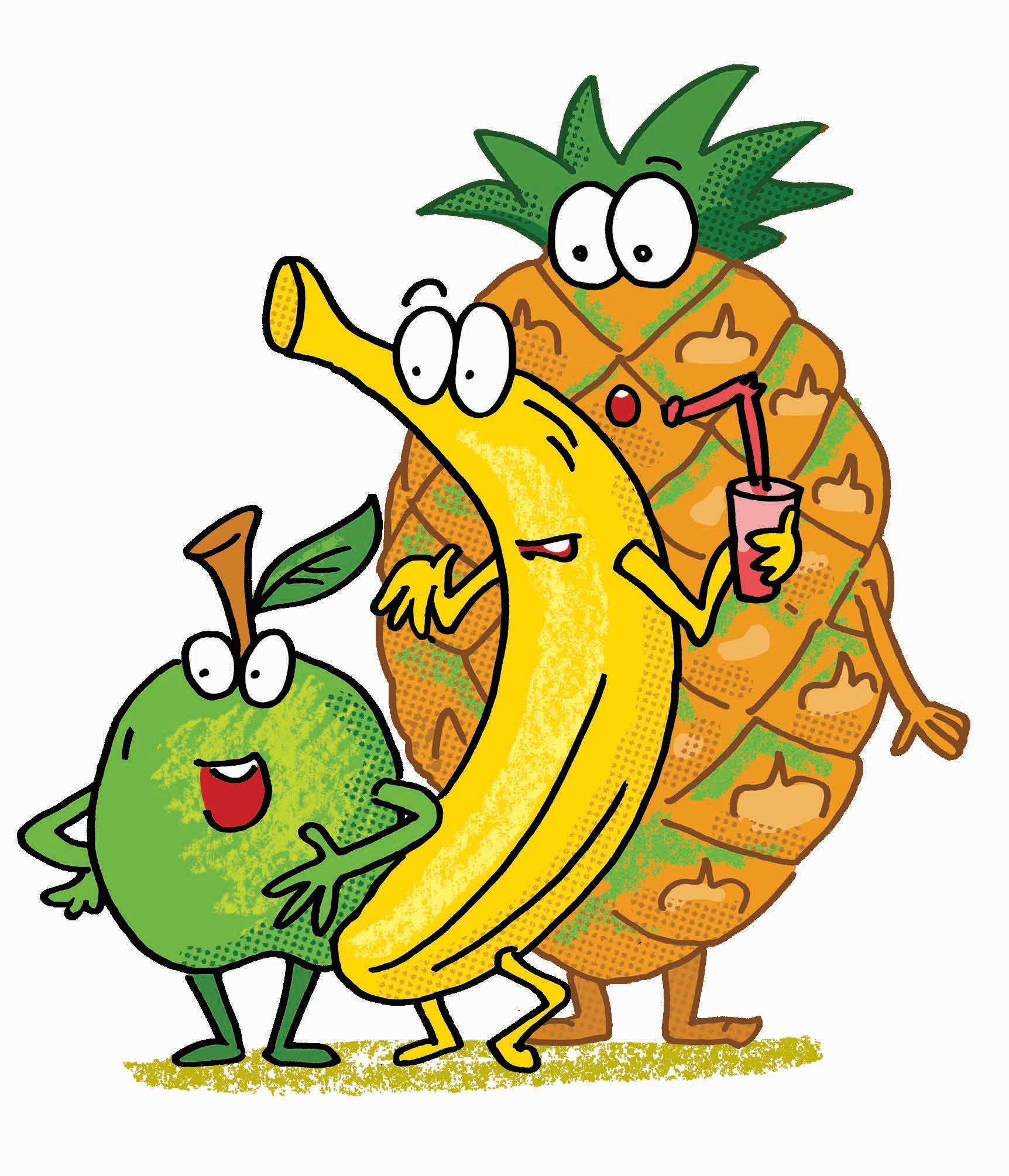

To celebrate our third birthday, we are inviting you, our fabulous subscribers, to recommend What on Earth! Magazine to your friends and family. If your friend becomes a subscriber too, there are fantastic FREE GIFTS on offer as rewards for BOTH you and them… To claim your fantastic FREE GIFTS, all you have to do is:





Refer a friend to What on Earth! Magazine and ask them to subscribe using this webpage: www.whatonearth.co.uk/friend or by scanning the QR code

Send your friend or family member the email address that is associated with your What on Earth! Magazine billing details. If you are unsure which email address this is, please contact us at: info@whatonearth.co.uk
When your friend subscribes, YOU will receive a free GROSS FACTOPIA! And YOUR FRIEND will receive a free copy of LISTIFIED! plus a £10 BOOK VOUCHER to spend at the What on Earth! bookshop.
